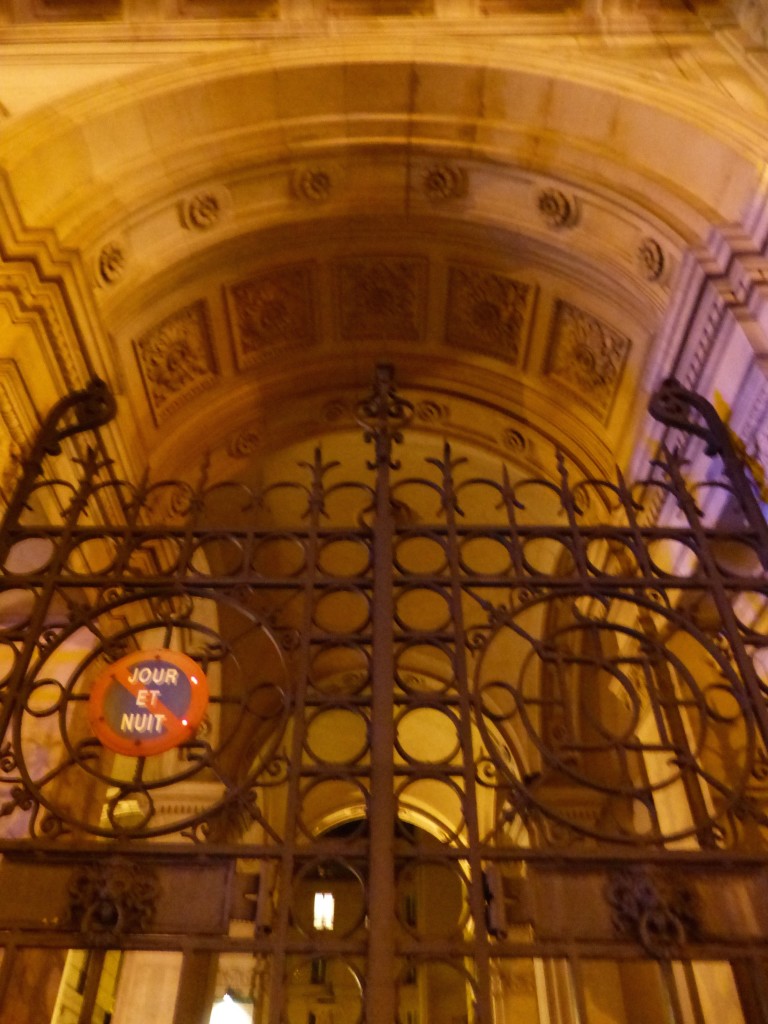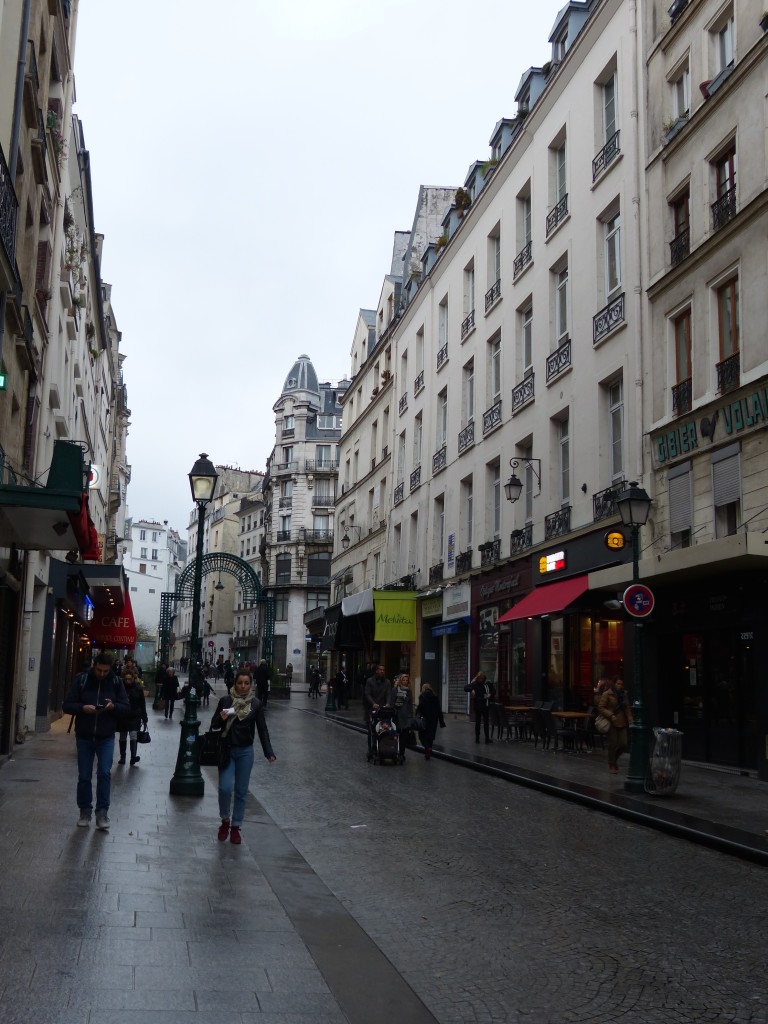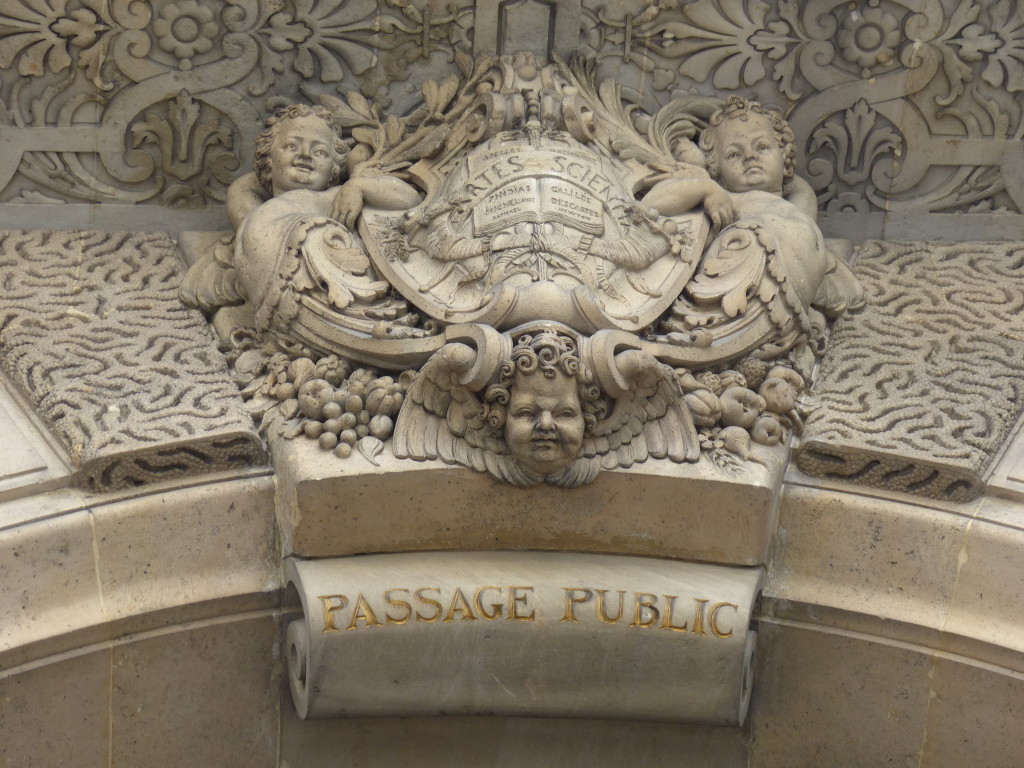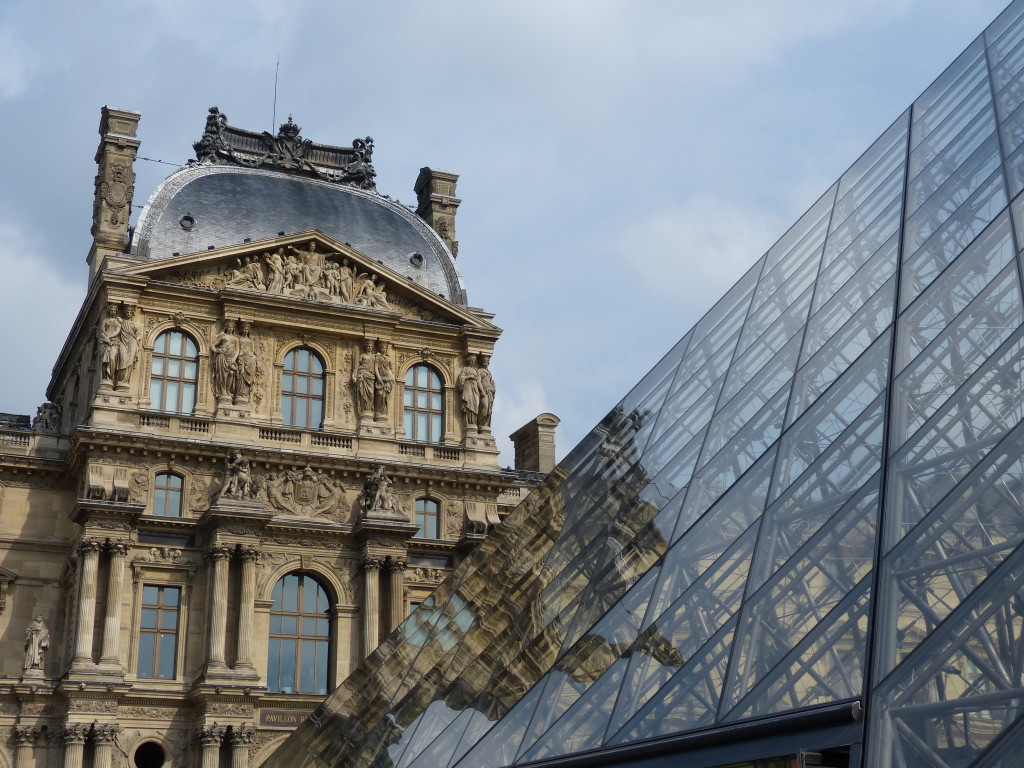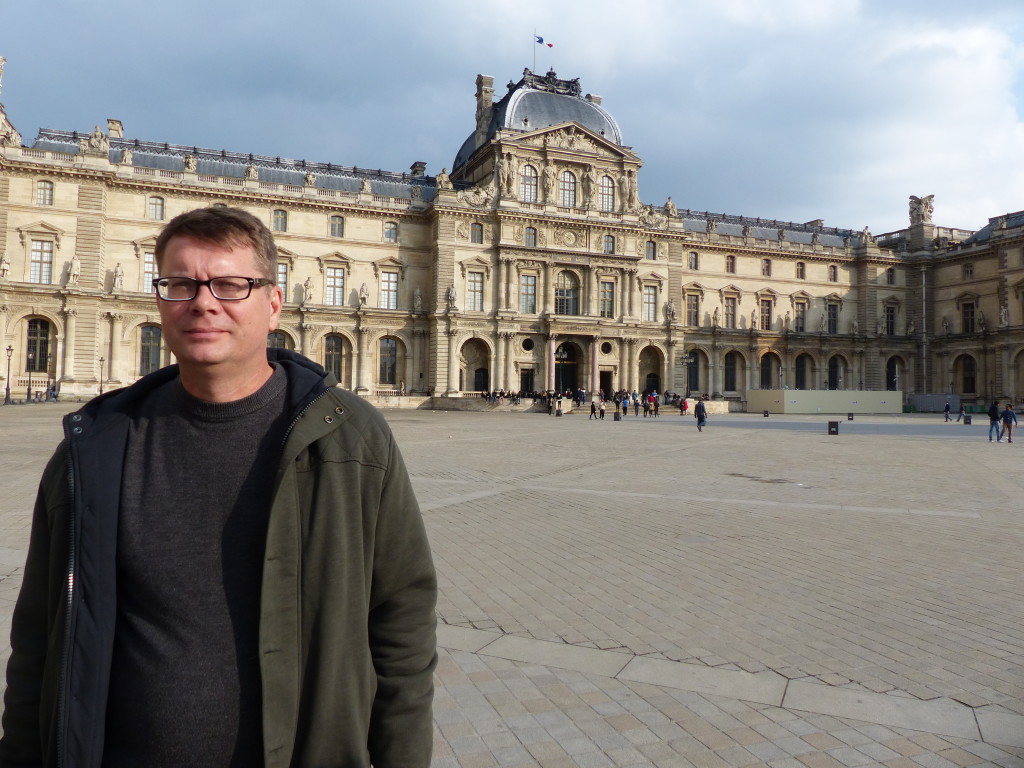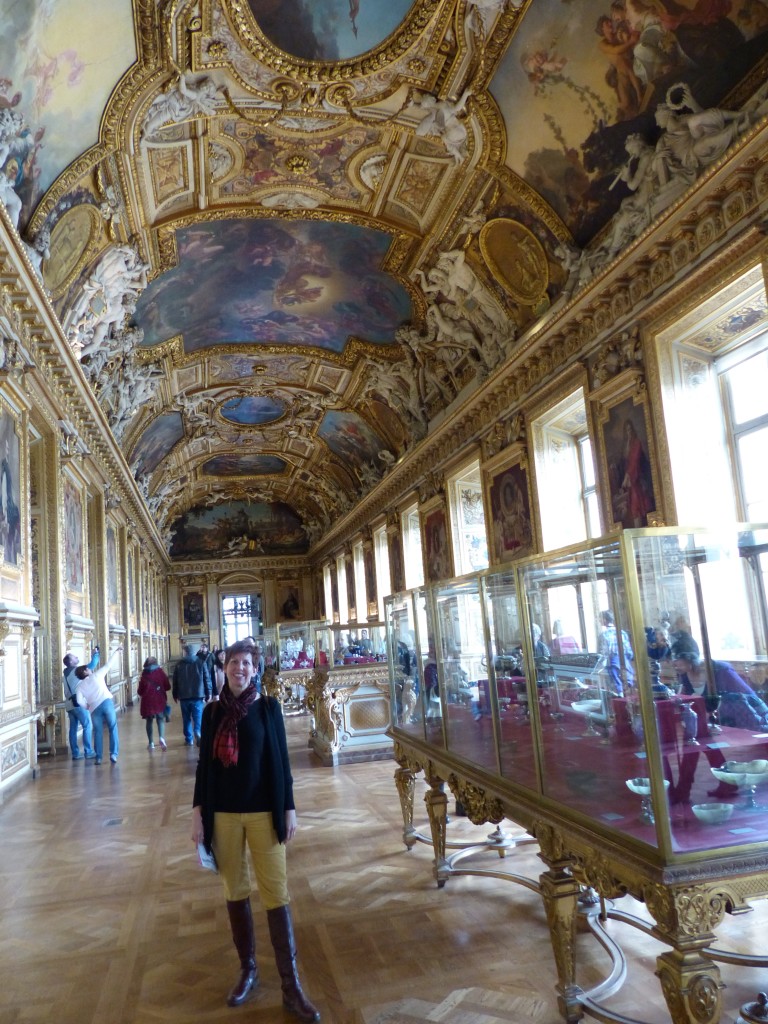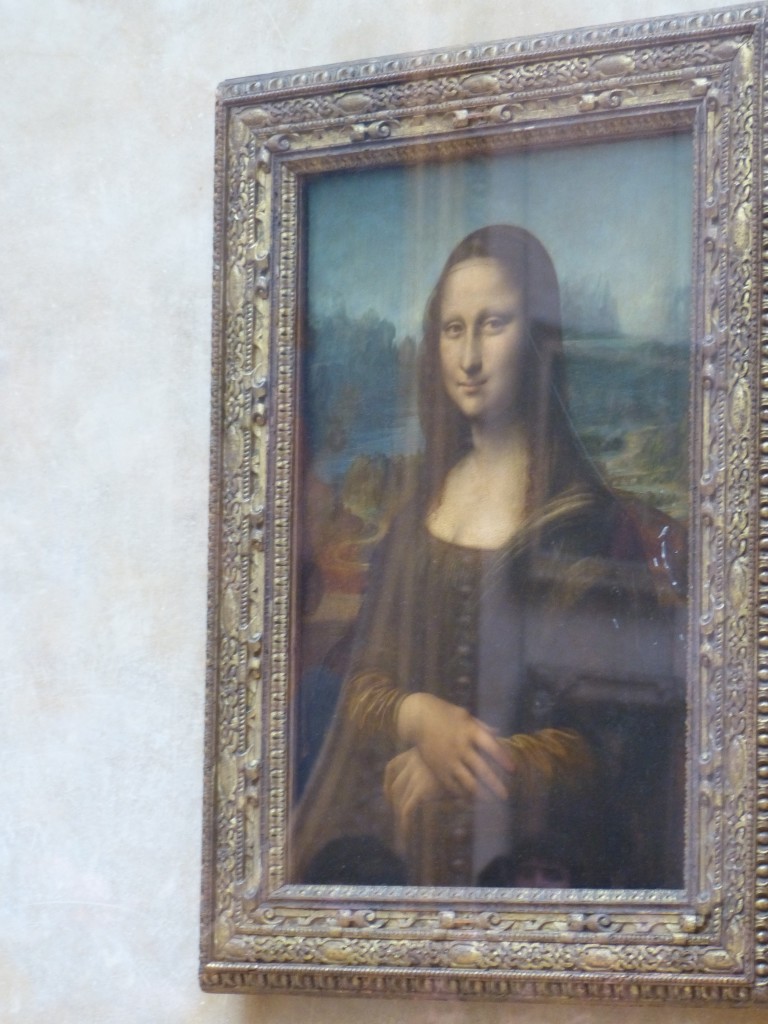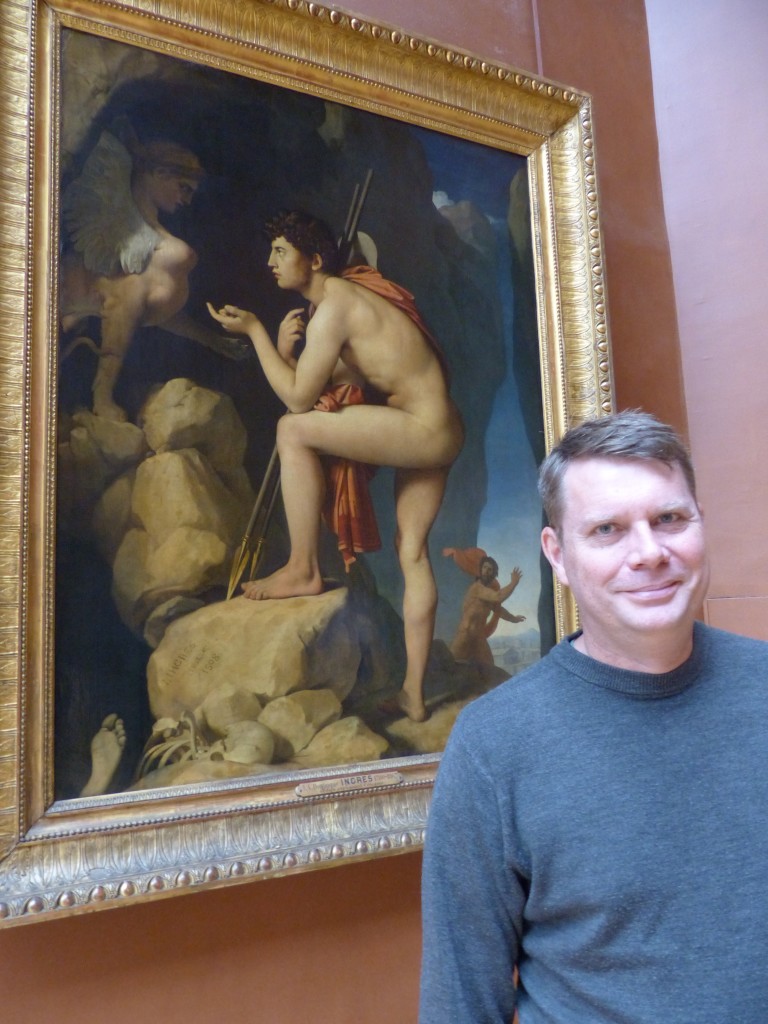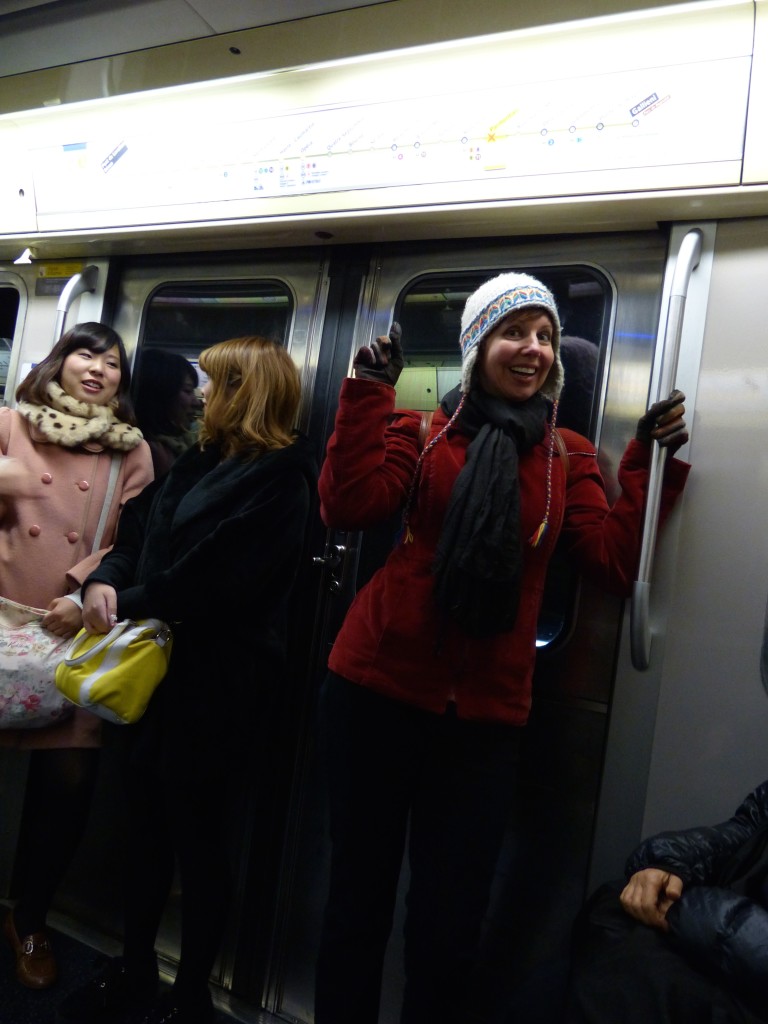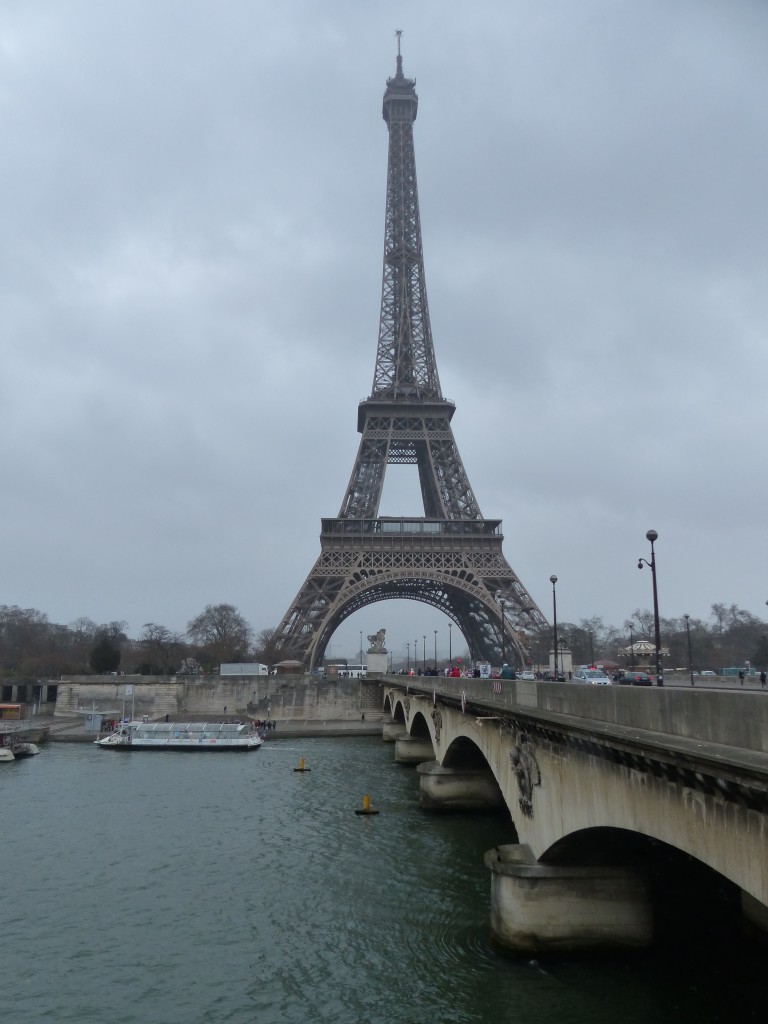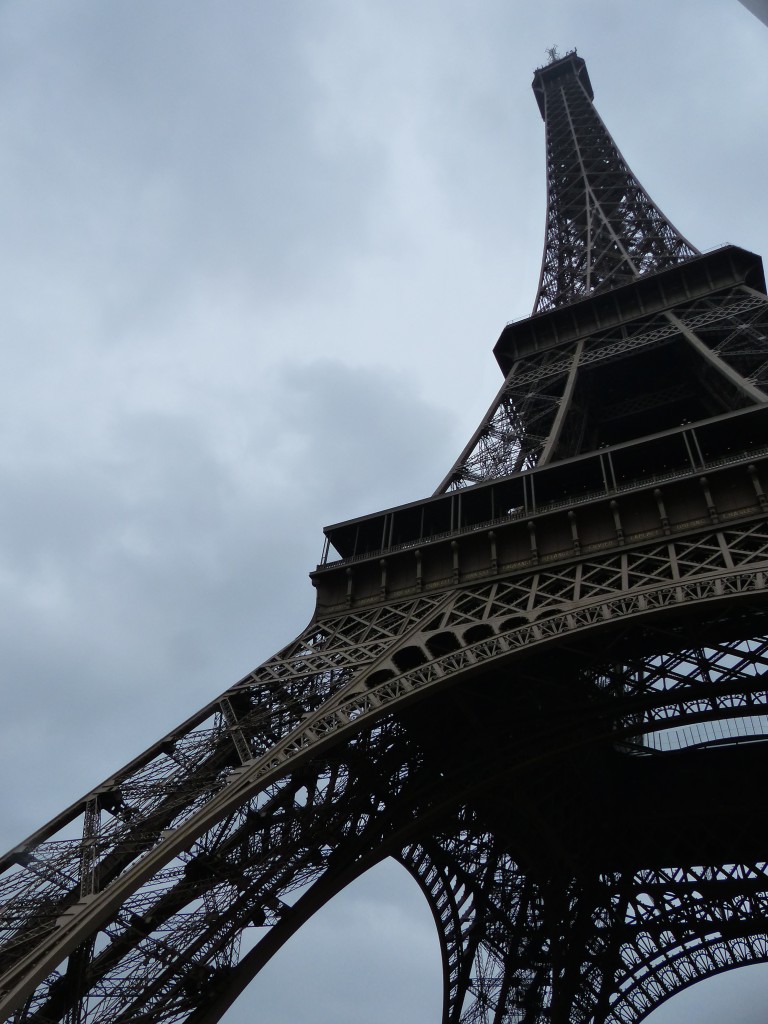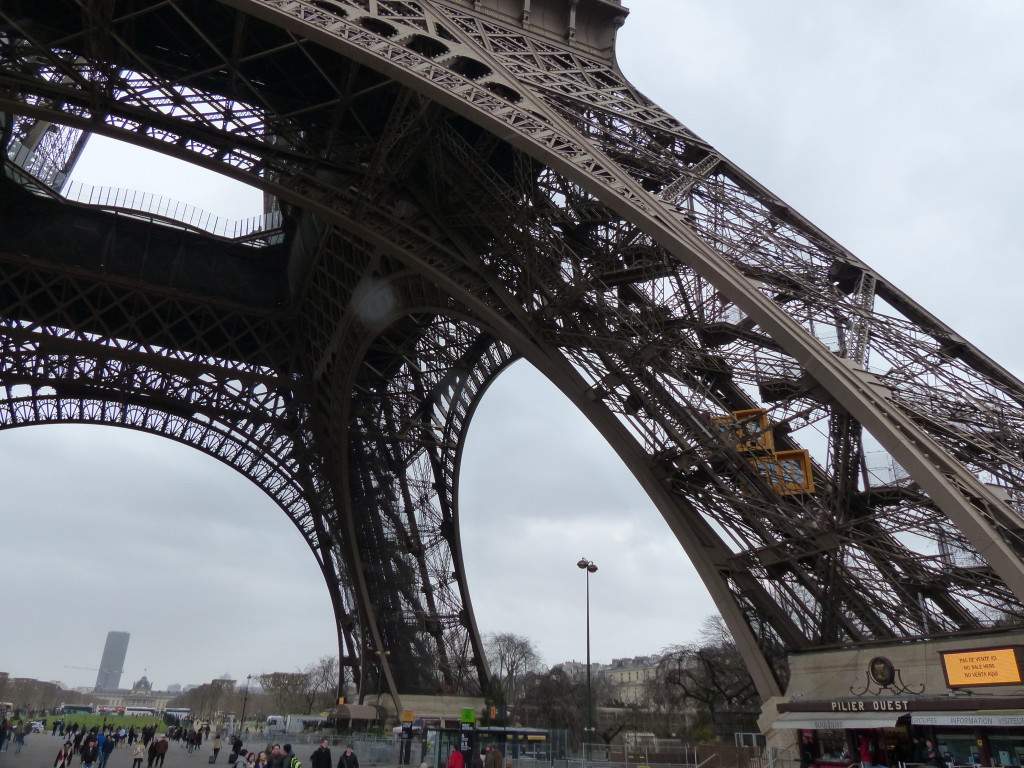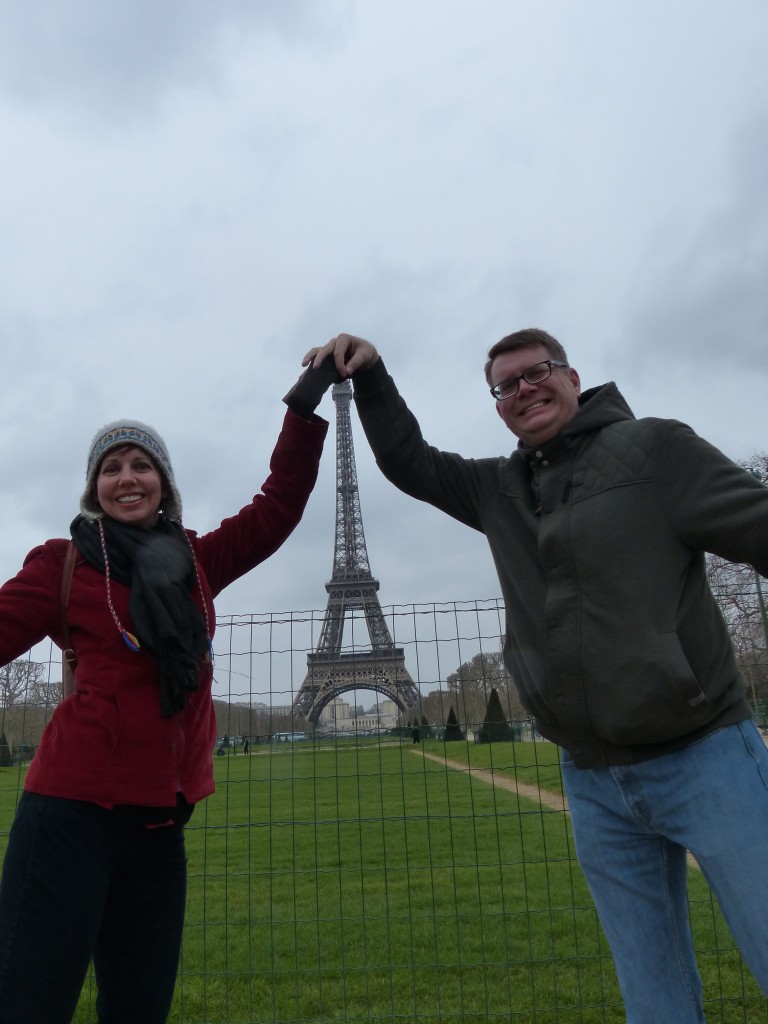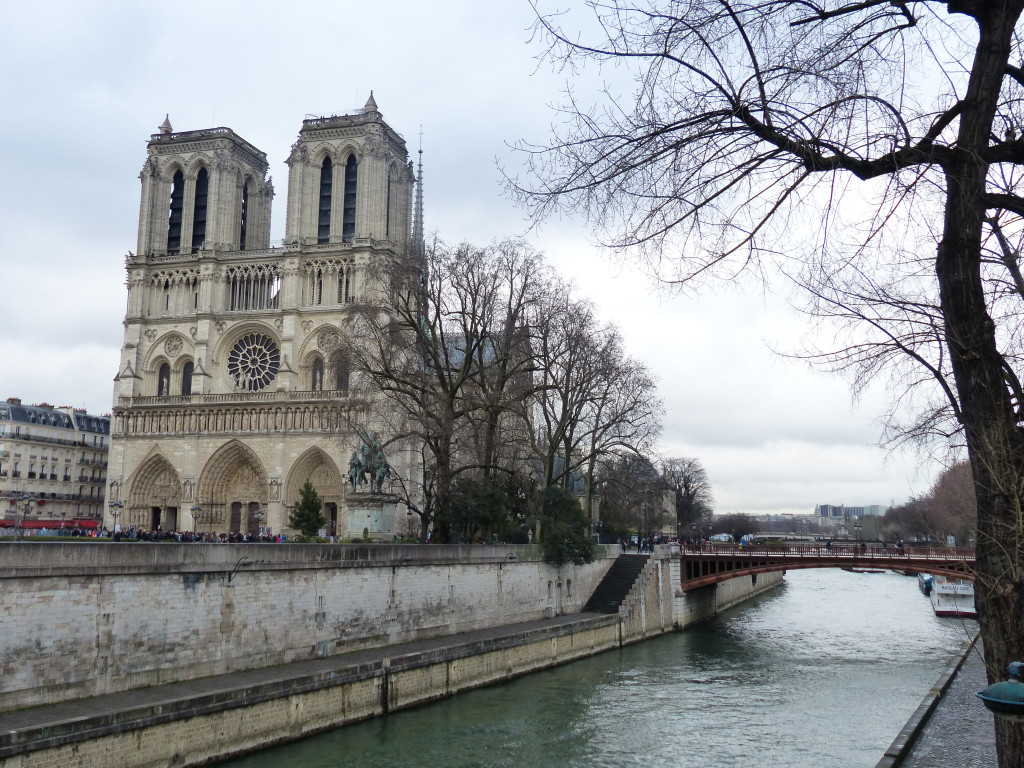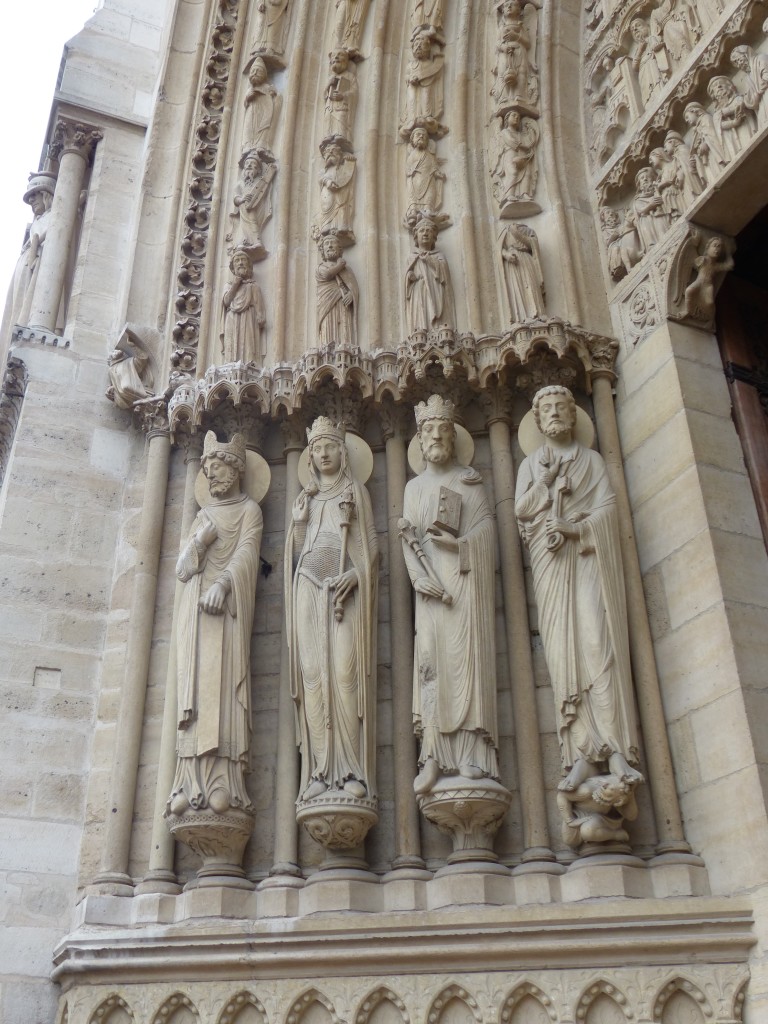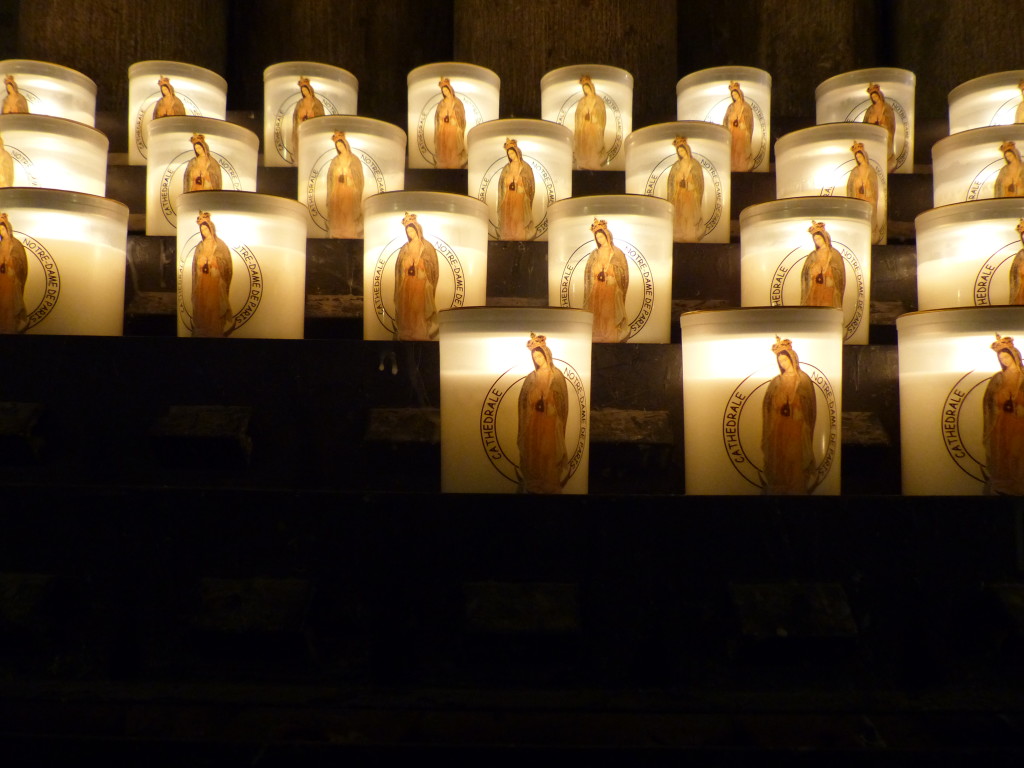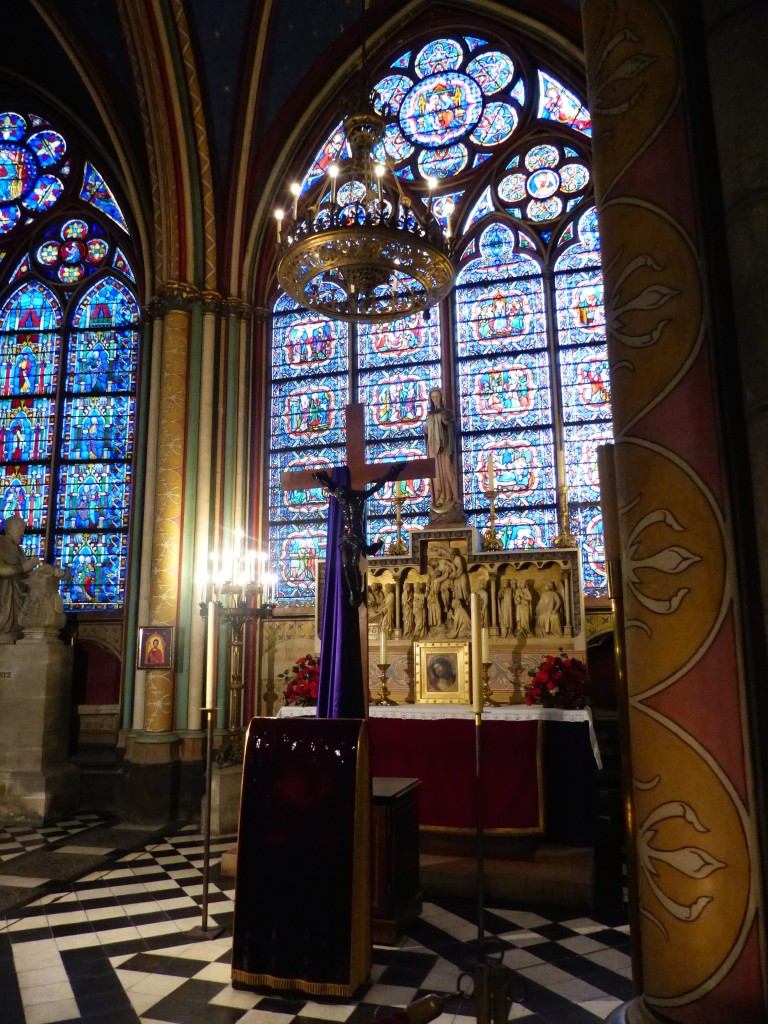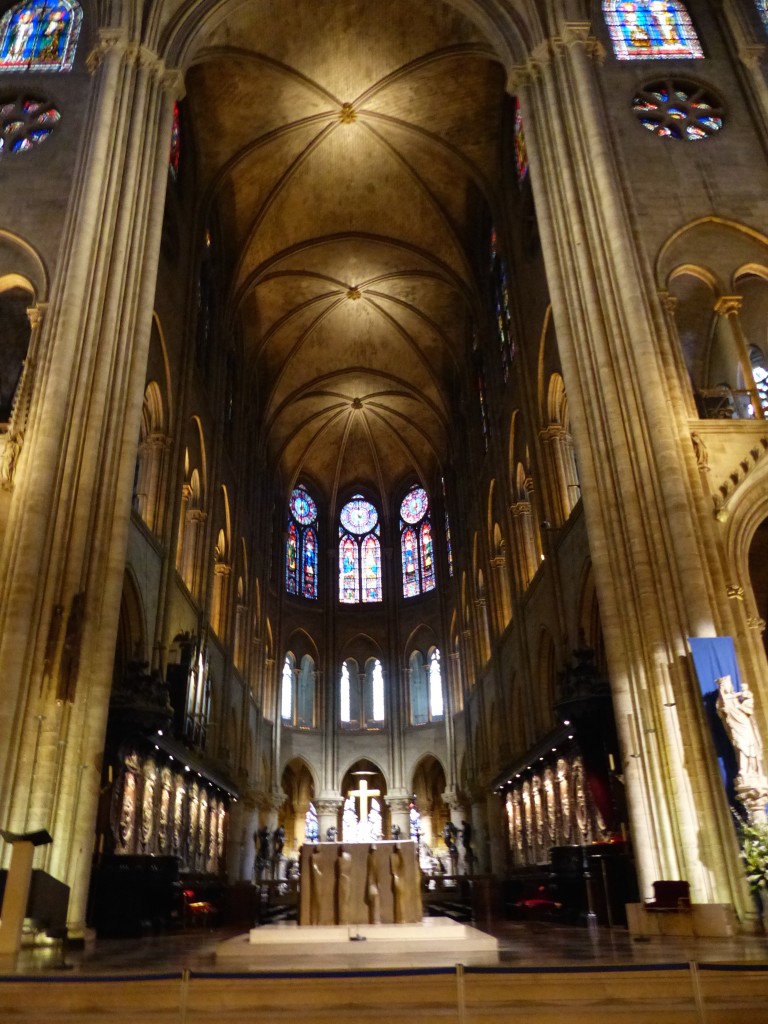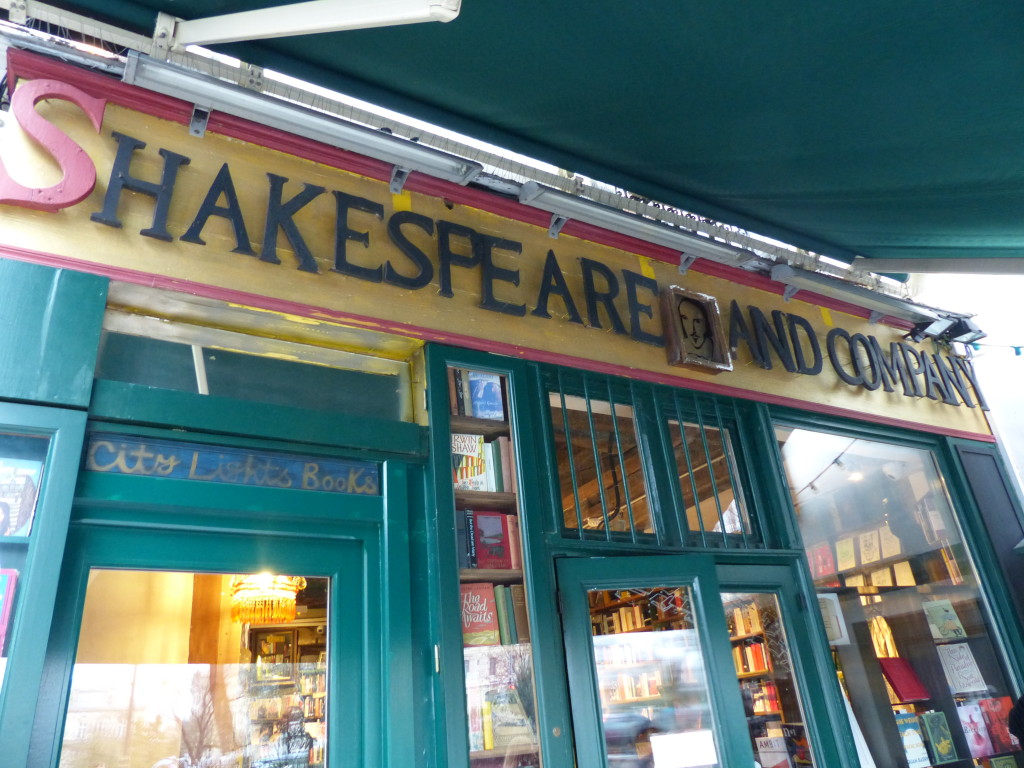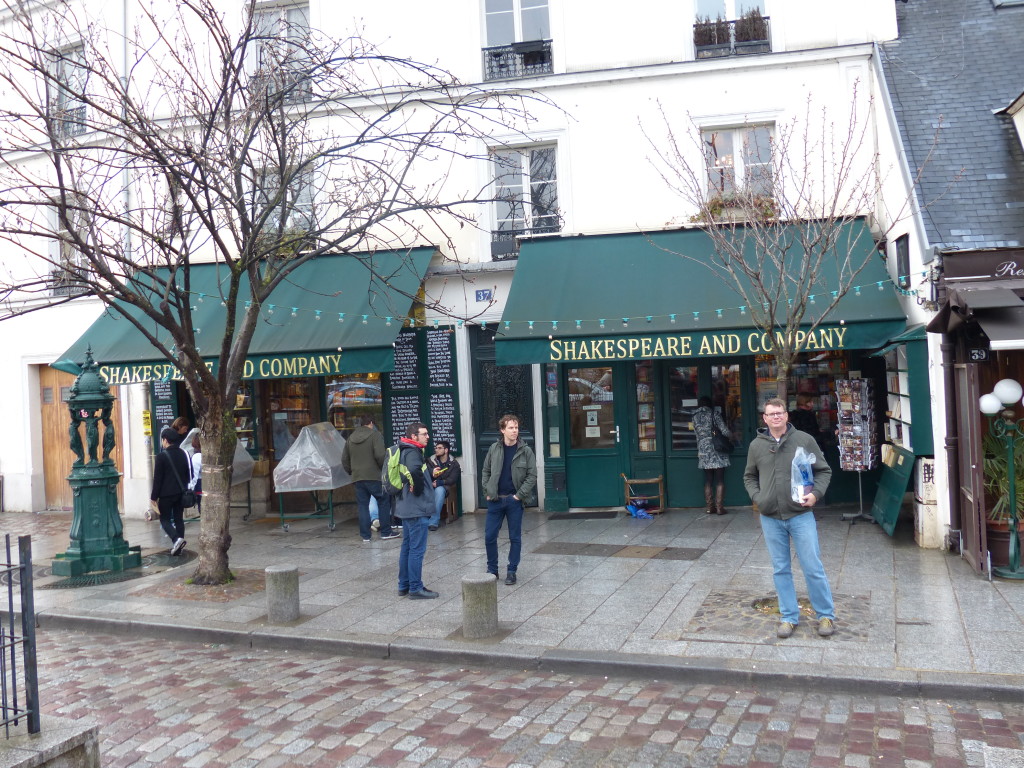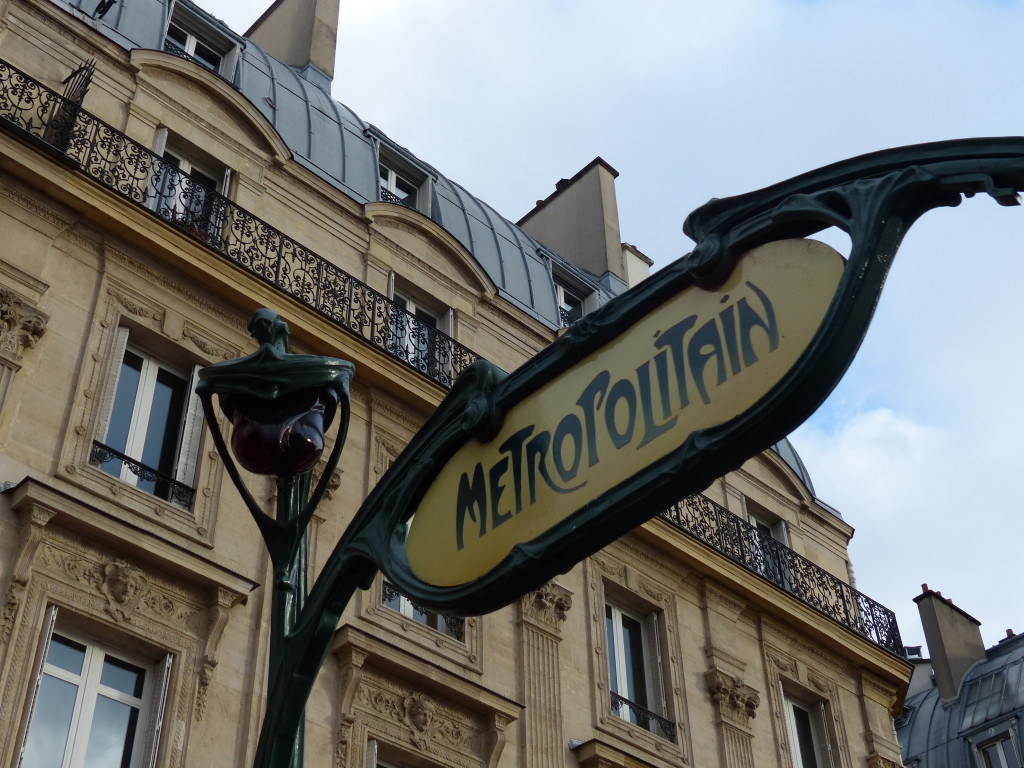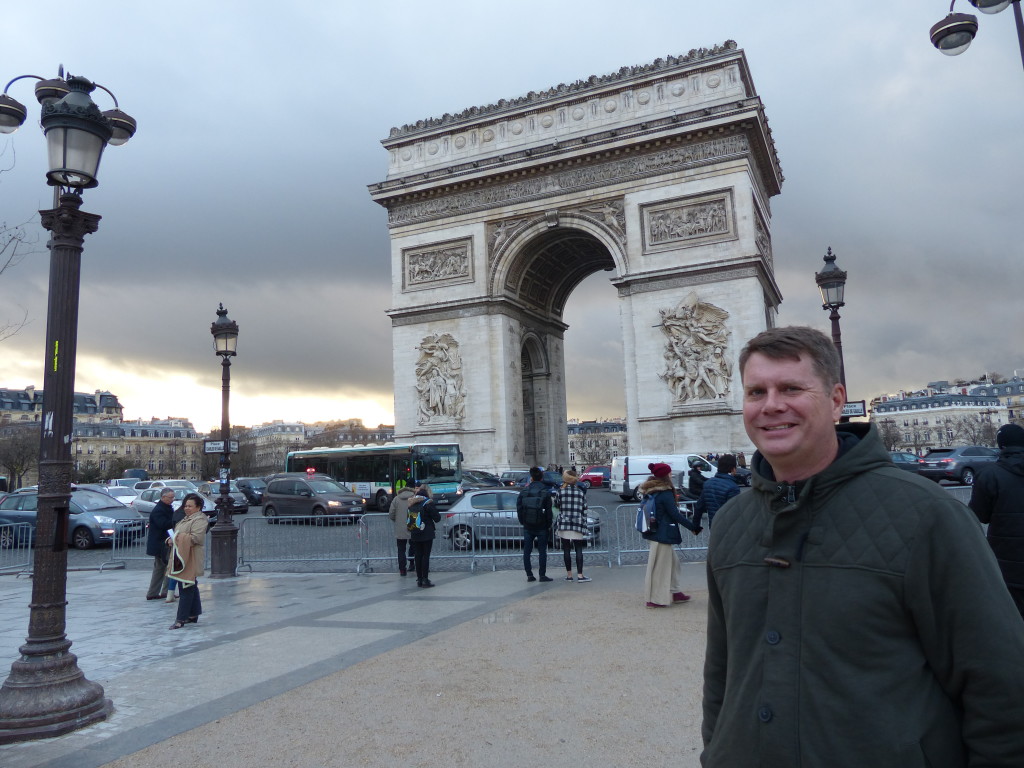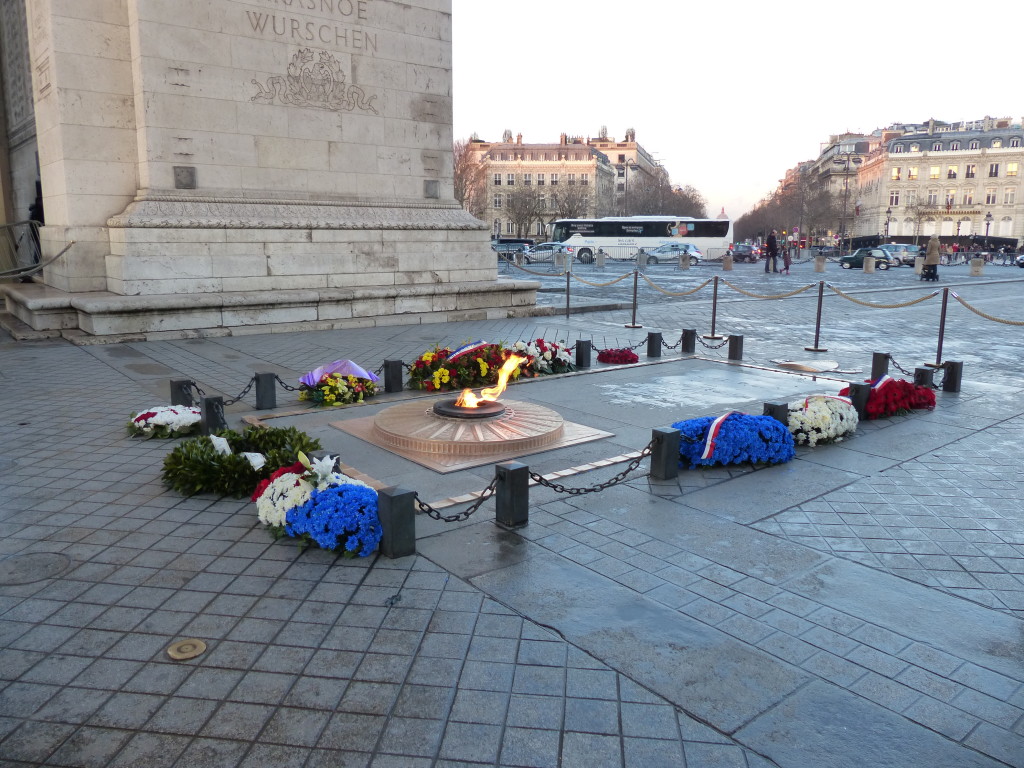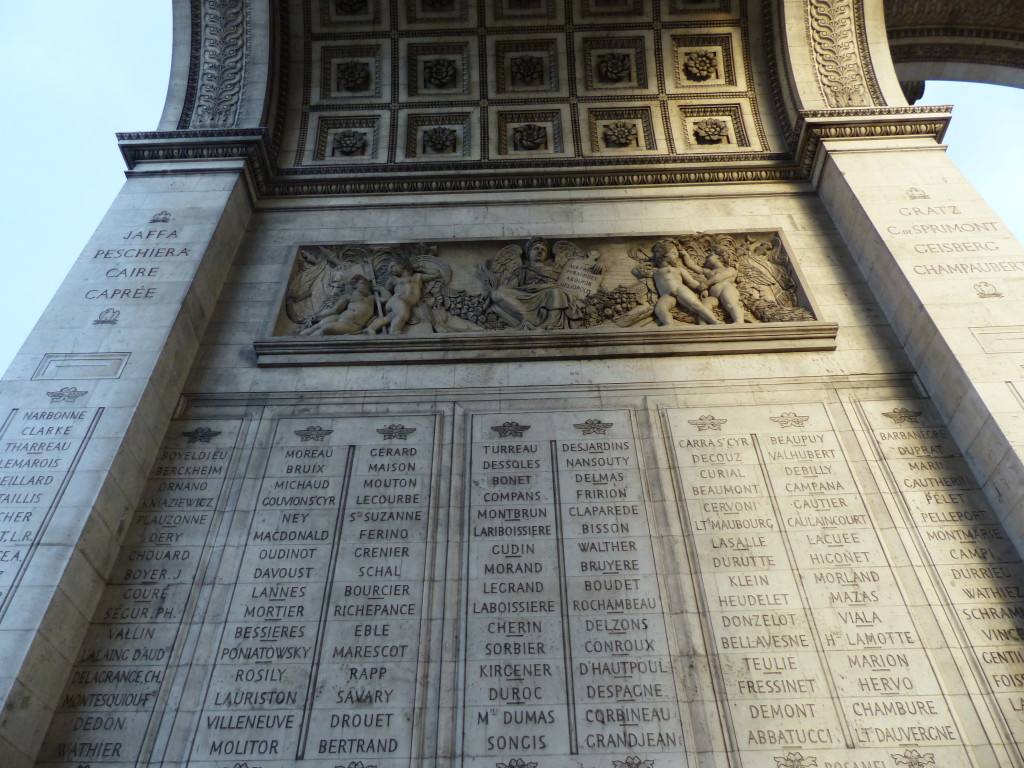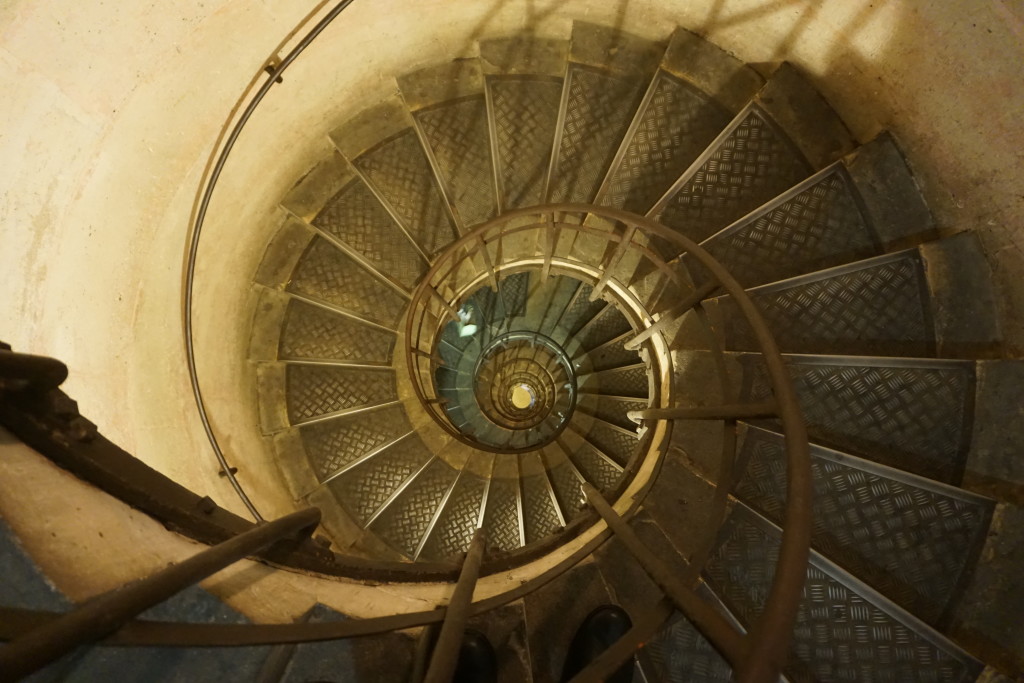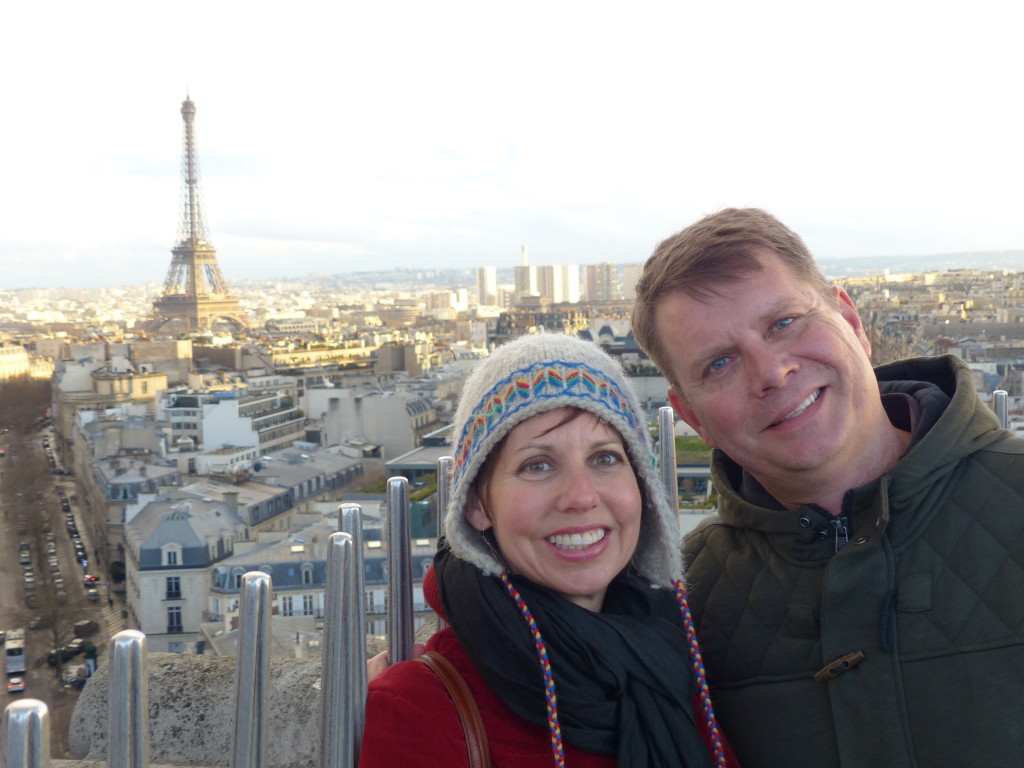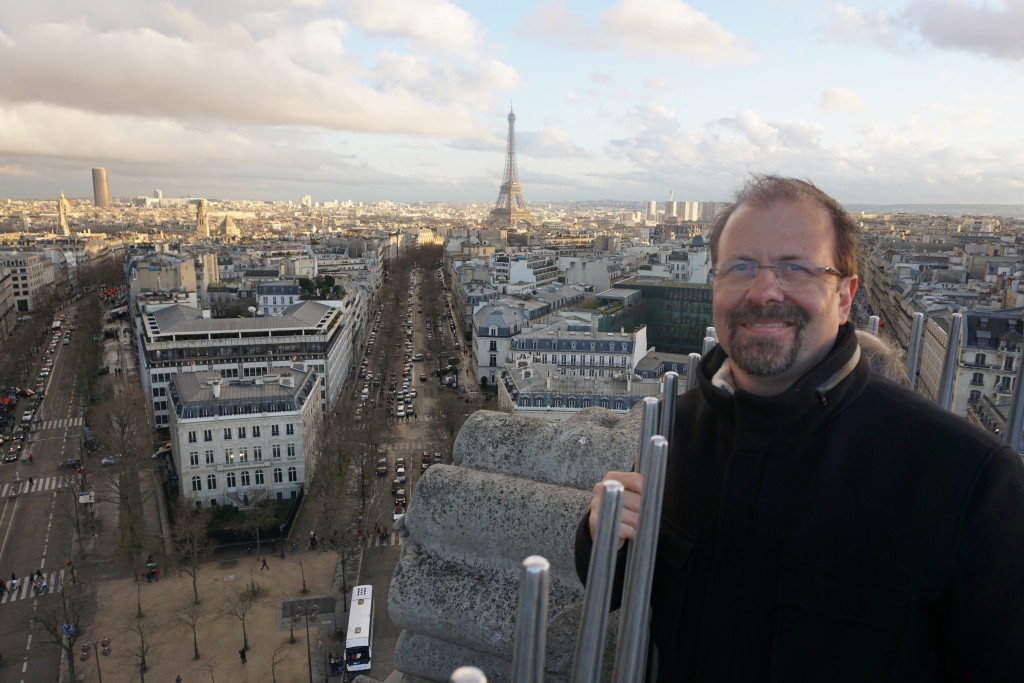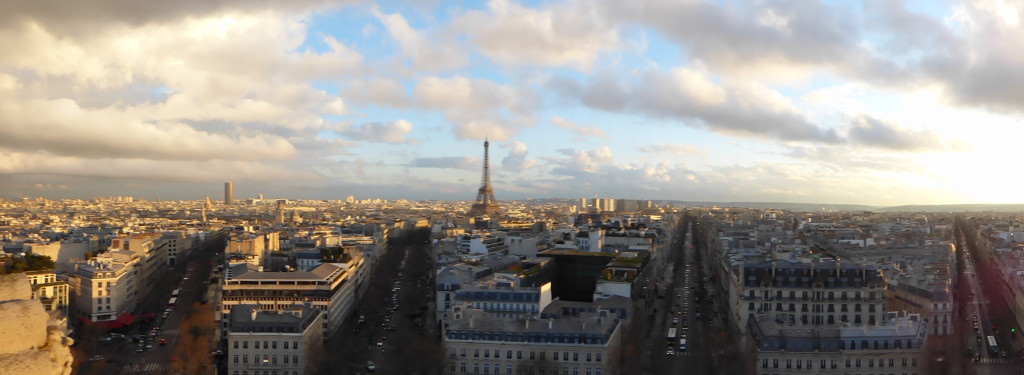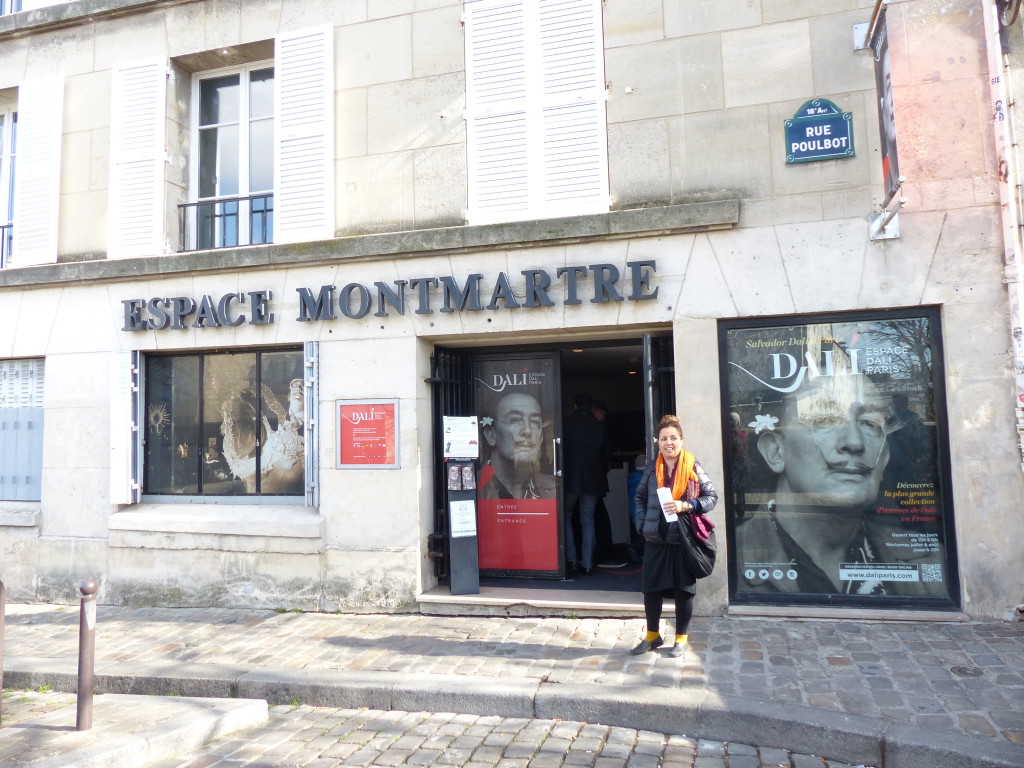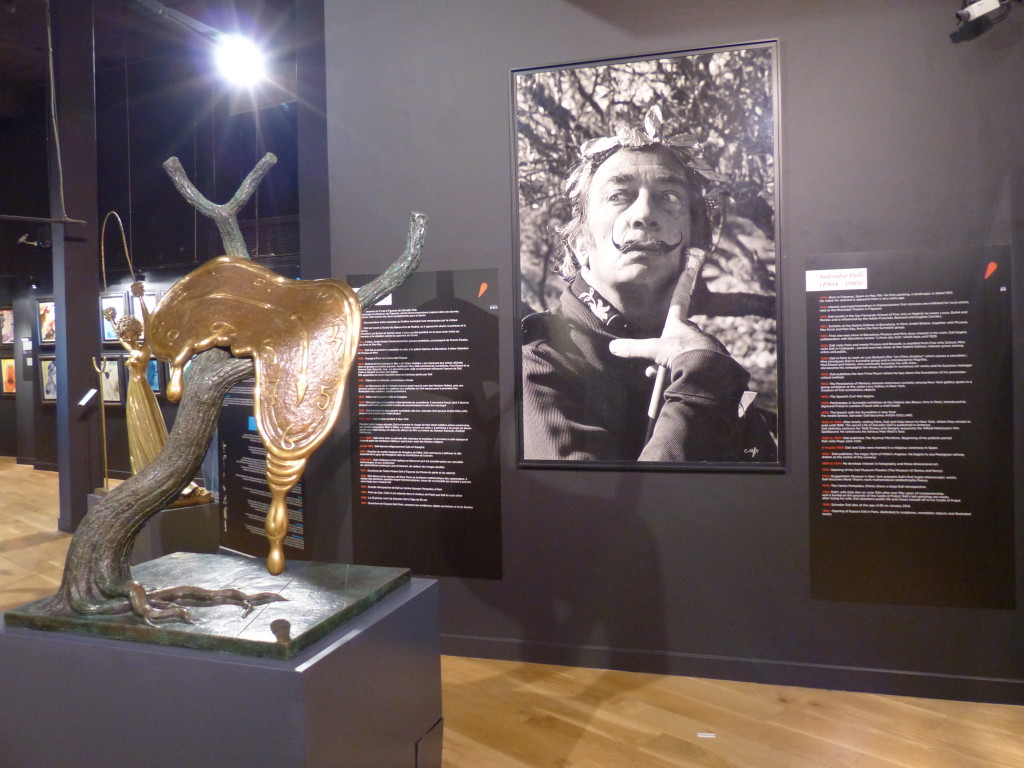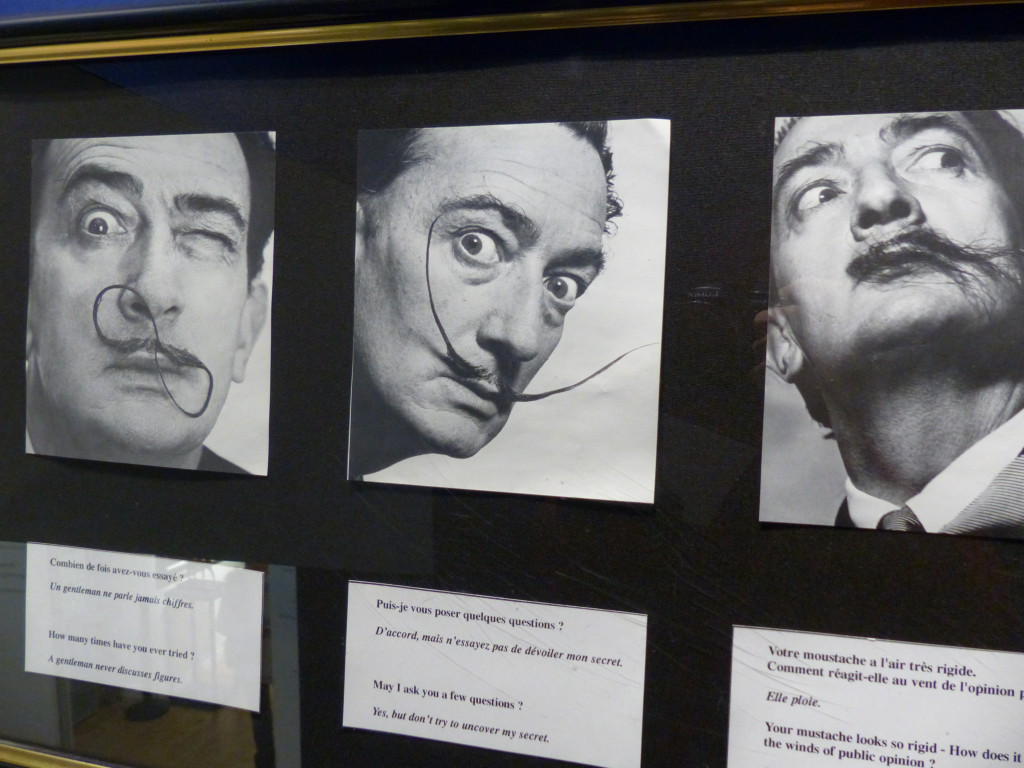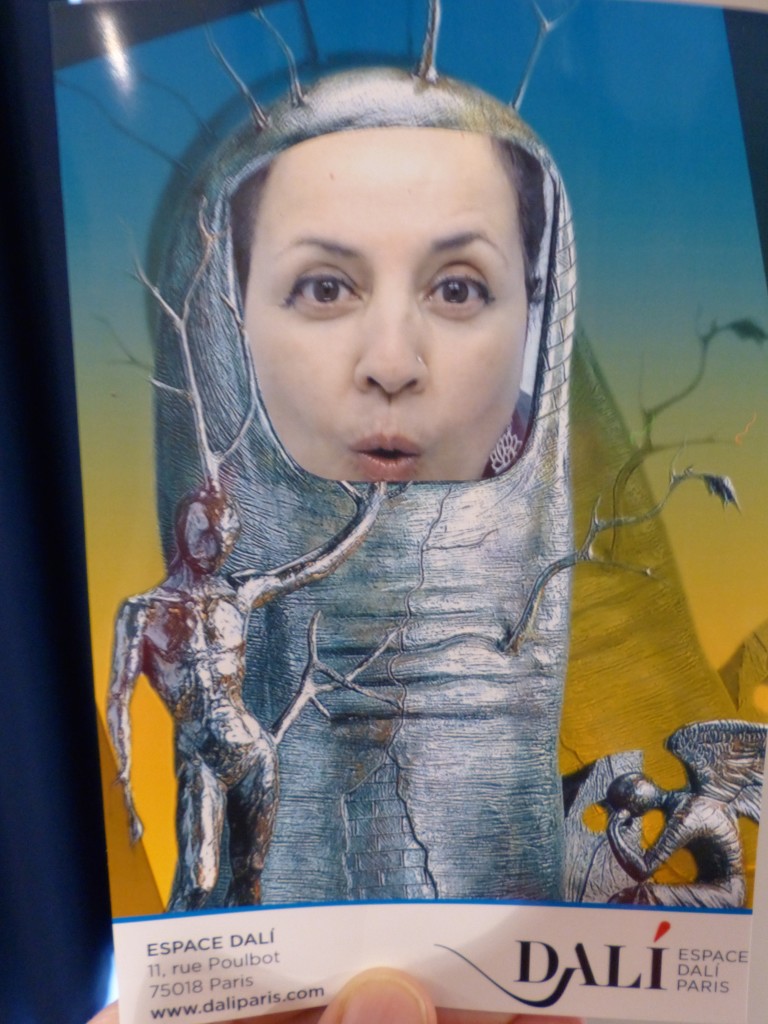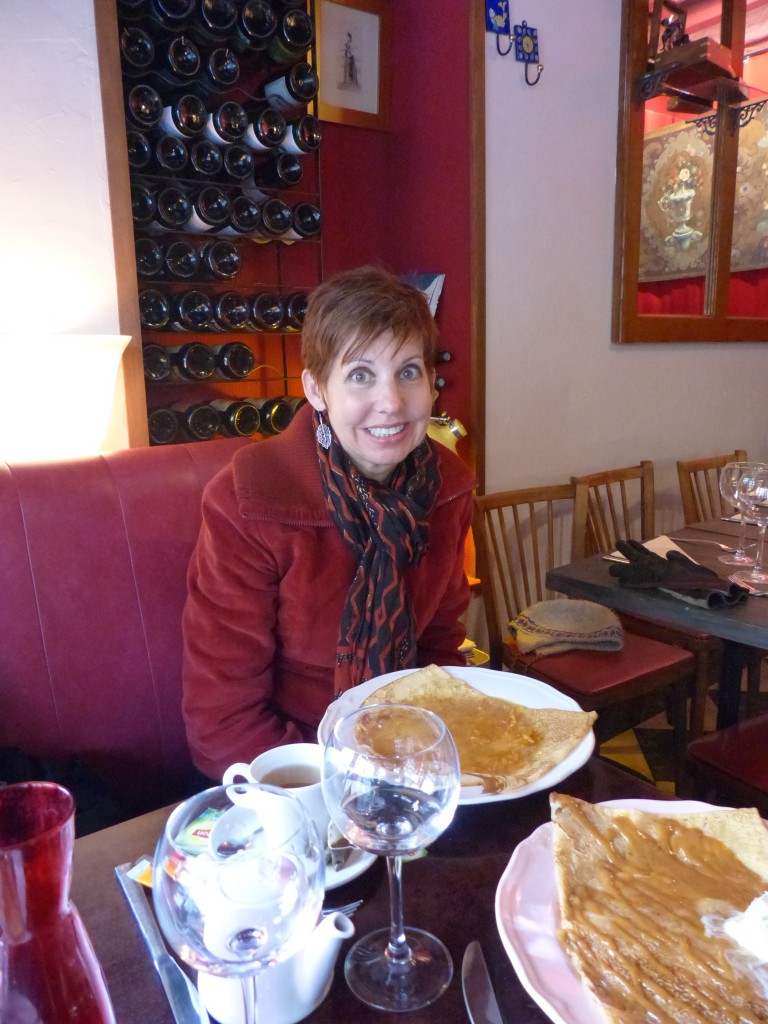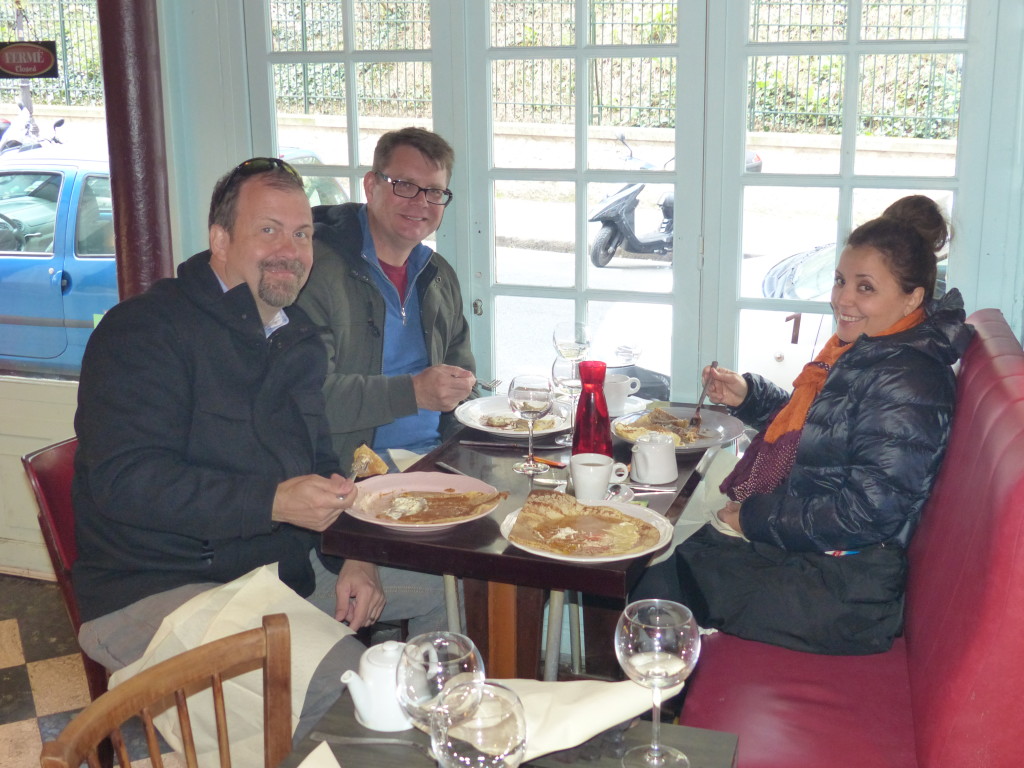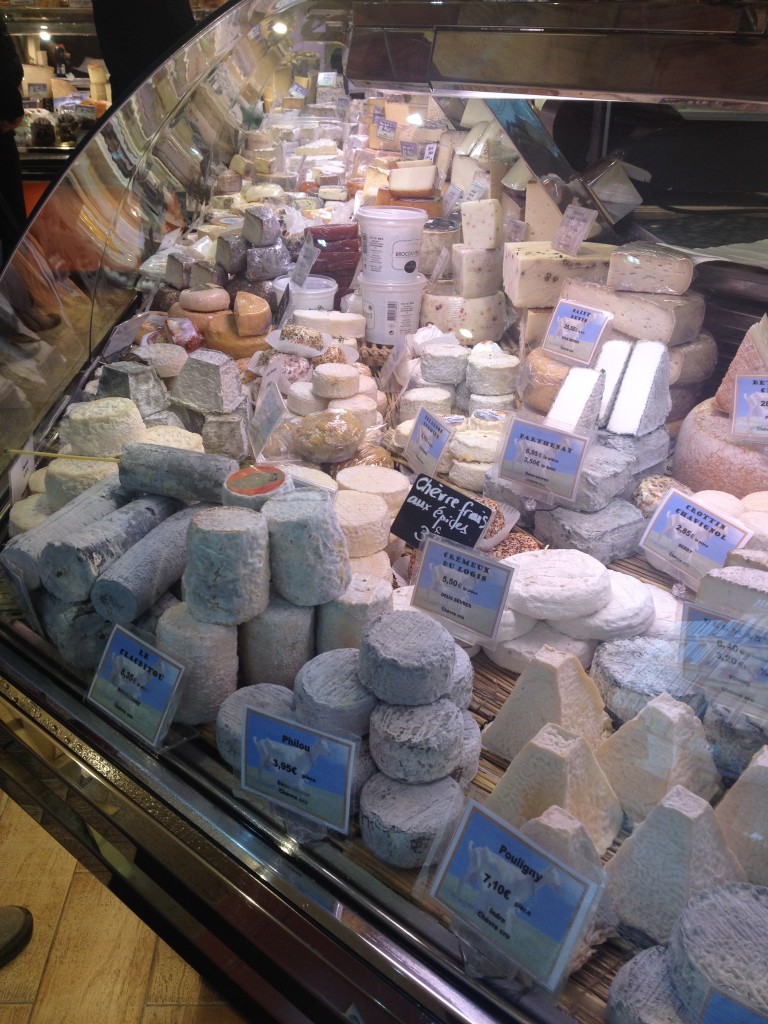After learning and playing in Istanbul, I was ready for the second part of my holiday: Paris! I waited at the Paris airport on March 24 for Tony to arrive from Delhi, and then we caught a taxi to meet up with our friends, Paul and Sepi. We worked with them in Shanghai, and now they’ve joined us at AES in Delhi. Sepi’s nephew, an international artist, keeps an apartment in Paris, and he was kind enough to let us crash there while he was out of town. The only French I remember from high school is “Où est la vache?” which means “Where is the cow?” Not useful in the big city, unfortunately. Good thing Sepi and Paul speak French.
Our Paris home was located on rue du Louvre. For those of you who don’t speak French as well as I do, that means “street of the Louvre.” In other words, we were just a block from the freakin’ Louvre Museum. Every day, we stepped through the courtyard’s iron gate into a charming neighborhood with endless options for shopping and eating. Despite the cold drizzly weather, we felt giddy dining outside under the heat lamps and watching Parisians saunter by (often with a baguette under one arm and a little dog on a leash, I kid you not).
Sepi in front of our apartment building.
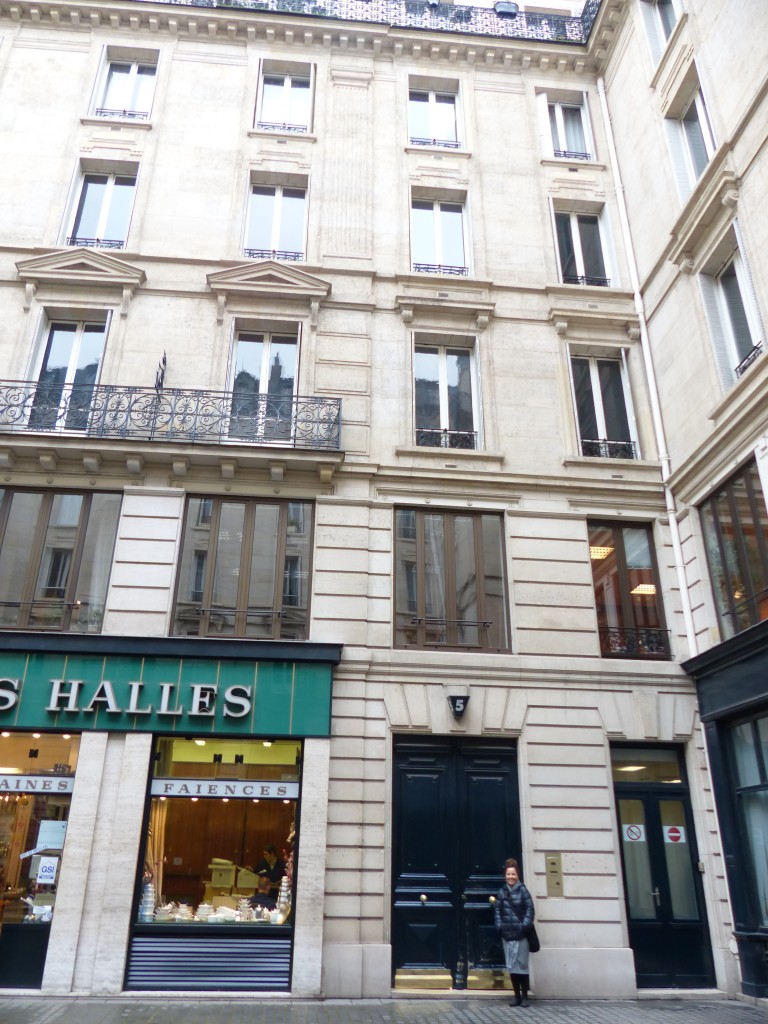
We ate many delectable meals at a neighborhood restaurant called Au Rocher de Cancale. According to Lonely Planet, “This 19th-century timber-lined restaurant (first opened in 1804 at No 59) is the last remaining legacy of the old oyster market. You can feast on oysters and seafood from Cancale (in Brittany) as well as other plats du jour.” I did not feast on oysters, but I did have some fantastic scallops and – more than once – this salad, which still gives me goosebumps of joy. Unless you live in a country that doesn’t regularly eat pork, you can’t fully appreciate that beautiful slice of prosciutto.
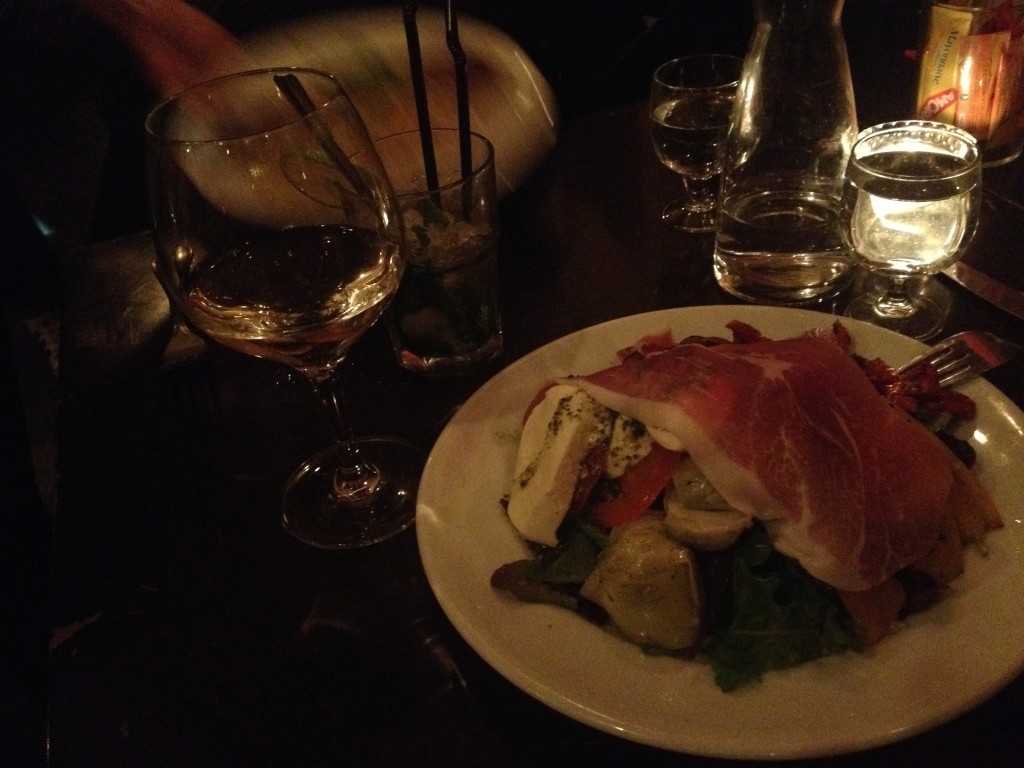
One of our favorite parts of this trip was just WALKING. We walked everywhere. Such a treat.
Tony and I spent a day at the Louvre (while Sepi and Paul explored other museums). The Louvre started as a fortress in 1190 to protect the capital from the Anglo-Norman threat but lost its defensive role as the city grew beyond its walls. It later served as a residence for a succession of kings, who linked the Louvre to the nearby Tuileries palace, demolished wings and built new ones, hired architects and designers to overhaul exteriors and interiors, and otherwise renovated and updated the sprawling palace. After Louis XIV moved to Versailles, he designated the Louvre as a sculpture gallery and exhibition space. According to the Louvre’s website, “The demolition of the Tuileries in 1882 marked the birth of the modern Louvre. The palace ceased to be the seat of power and was devoted almost entirely to culture. … Slowly but surely, the museum began to take over the whole of the vast complex of buildings.”
A few fun facts:
* The museum was evacuated, except for its heaviest pieces, at the outbreak of World War II in 1939. Nazi officials ordered the Louvre re-opened but found only sculptures covered in burlap bags.
* In 1981, President Francois Mitterand announced plans to restore the whole palace to function entirely as a museum.
* The glass Pyramid, built by I.M. Pei, opened in 1989 as the entrance to the museum. Here’s an interesting New York Times article about the inauguration.
* The Mona Lisa hasn’t always been on display in the Louvre. According to Six Things You May Not Know About the Louvre, Napolean Bonaparte hung the painting in his bedroom for awhile. Also, it was stolen from the Louvre in 1911 and recovered two years later; hence the guards and bullet-proof glass.
As for the collection of masterpieces in the Louvre, its simply too vast and fantastic to describe. With more than 35,000 pieces of art spread out over 650,000 square feet of gallery space, it’s overwhelming. We obviously didn’t see it all in our daylong visit.
Whenever Tony and I visit a museum, we each pick one favorite object we would like to steal. I chose the Winged Victory of Samothrace, a 2,200-year-old sculpture of the goddess Victory found on a Greek island in 1863. It’s not a very original choice, as it’s listed as one of the top five things to see at the Louvre. However, newly restored, her white marble gleams as she leans into the wind to announce a naval battle triumph. Even headless, she exudes a spirit of sexy optimism and power with her wings outspread and her tunic whipping around her legs. I think she’d make a nice addition to our lakefront landscape. Here’s way more information about the sculpture from the Louvre’s website, and here’s an interesting Wall Street Journal article on the controversy surrounding her restoration.
Tony chose a painting, Oedipus and the Sphinx, by Jean Auguste Dominique Ingres. It’s not something I would necessarily want hanging in my living room, but my sweet English teacher husband was enamored. As we stood there, he explained that the Sphinx – a monster comprising the head and chest of a woman, body of a lion and wings of a bird – posed a riddle to everyone trying to pass through this region of Thebes, with death as the punishment for a wrong answer. Tony even knew the riddle – “What is it that has a voice and walks on four legs in the morning, on two at noon, and on three in the evening?” – and the answer: man. Oedipus knew the answer, too, noting that man crawls on all fours as a child (morning), walks on two legs as an adult (noon), and uses a cane in old age (evening).
So, who won? Which would you steal?
My choice:
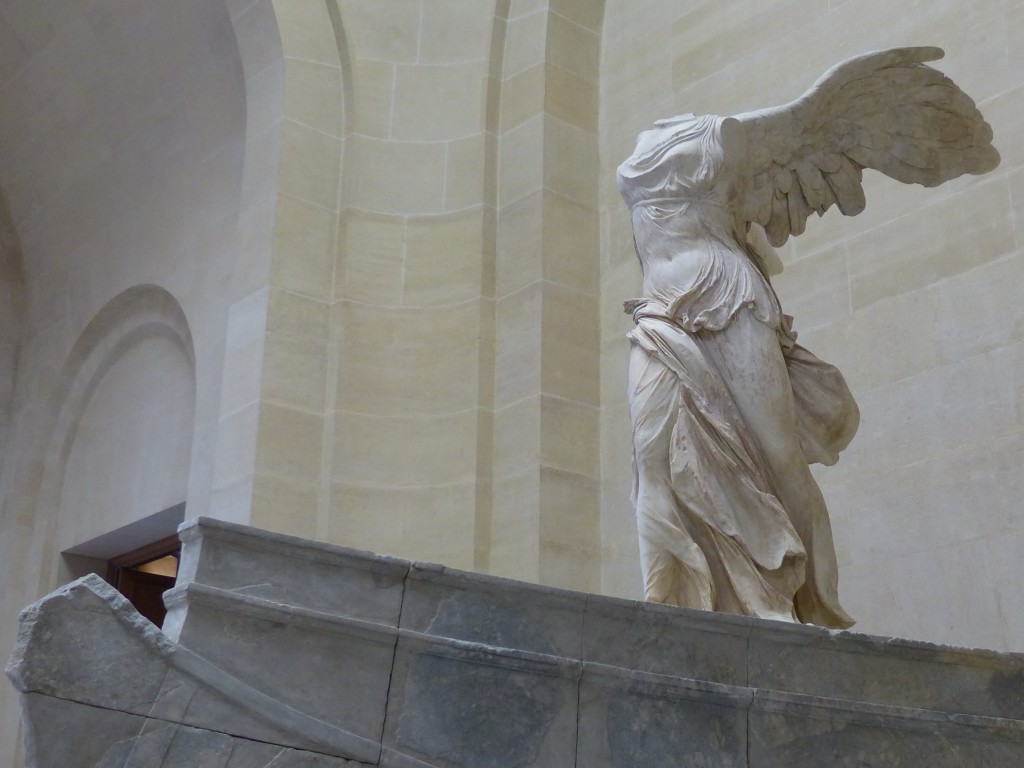
One sprinkly day, we took the Metro to the Eiffel Tower. We ducked into a café to wait out the rain (and enjoy a cup of tea), but the weather just got worse. Still, I was rather fixated on the artsy industrial angles of the tower and took about 975 photos, wiping drizzle off my lens after almost every shot. Warm Sharon always wants to get to the highest point of any tall tourist destination, but Cold Sharon couldn’t be bothered and took consolation in knowing she did it as a teenager. Here’s proof – with my Nana on the second floor of the Eiffel Tower in 1982.
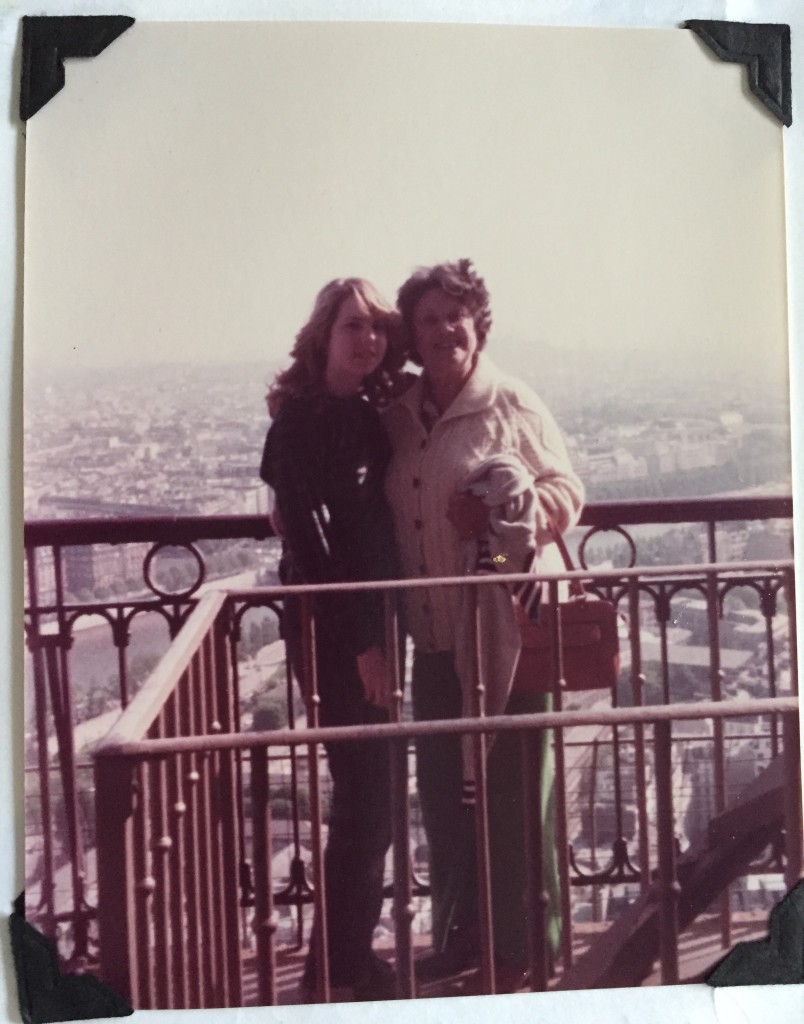
I’m a little bummed that we didn’t take the tour, though, so here’s the scoop from the official Eiffel Tower website:
The Eiffel Tower was built by Gustave Eiffel for the 1889 Exposition Universelle, which was to celebrate the 100th year anniversary of the French Revolution. Its construction in 2 years, 2 months and 5 days was a veritable technical and architectural achievement. “Utopia achieved”, a symbol of technological prowess, at the end of the 19th Century it was a demonstration of French engineering personified by Gustave Eiffel, and a defining moment of the industrial era. It was met immediately with tremendous success.
Only intended to last 20 years, it was saved by the scientific experiments that Eiffel encouraged, and in particular by the first radio transmissions, followed by telecommunications. For example, the radio signals from the Pantheon Tower in 1898; it served as a military radio post in 1903; it transmitted the first public radio programme in 1925, and then broadcast television up to TNT more recently.
Since the 1980s, the monument has regularly been renovated, restored and adapted for an ever-growing public. A universal Tower of Babel, almost 250 million visitors regardless of age or origin have come from all over the planet to see it since its opening in 1889. As France’s symbol in the world, and the showcase of Paris, today it welcomes almost 7 million visitors a year (around 75% of whom are foreigners), making it the most visited monument that you have to pay for in the world.
Sepi and I actually huddled by a sign to escape the stinging rain. We’re such babies.
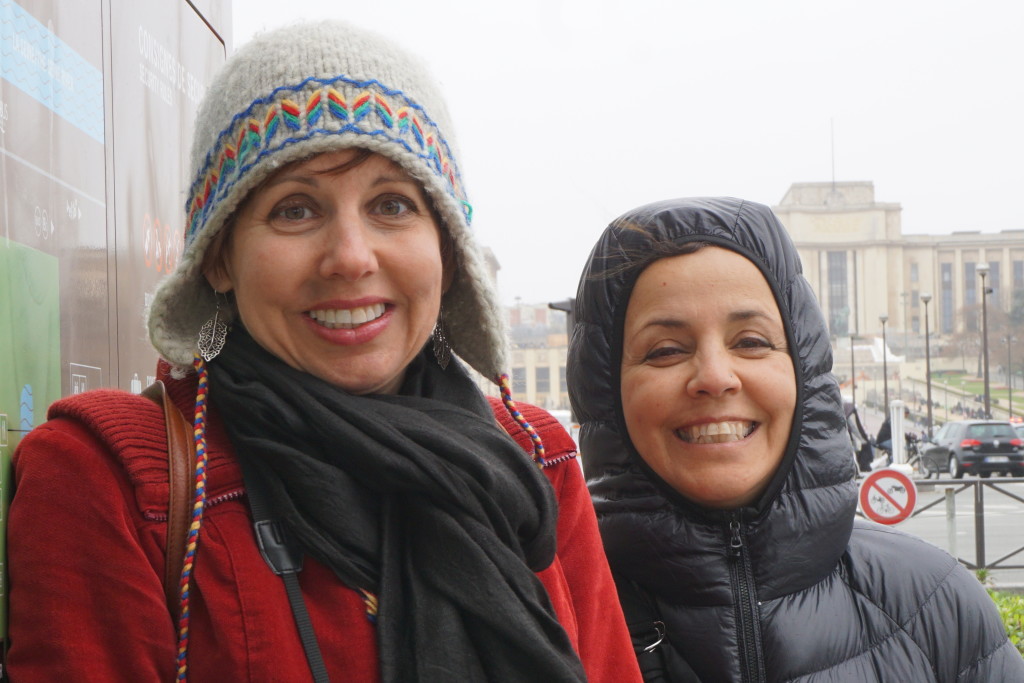
From the Eiffel Tower, we took the Metro to the Notre Dame Cathedral. The Notre Dame was built starting in 1163 on the Île de la Cité, a natural island in the Seine and the seat of power in medieval times. You can visit the towers (387 steps to the top), and you know I wanted to do that! But the lines were long, and the rain was cold. So … instead, we walked through the church and then popped into a café for more tea and pastries. Notice a pattern?
Joan of Arc was burned at the stake in 1431 but declared a martyr in 1456 and beatified at Notre Dame by Pope Pius X in 1909. As for the hunchback? Well, Victor Hugo invented the character of Quasimoto and wrote his book as a way of promoting the church’s traditional architecture and gothic restoration. However, researchers have found evidence of a huchbacked sculptor who worked at the Notre Dame in the 1820s – about the time Hugo was working on his novel. Coincidence?
I had read the fascinating Vanity Fair article, “In a Bookstore in Paris,” last fall about Shakespeare and Company. The opening blurb says, “Perhaps the most famous independent bookstore in the world, Shakespeare and Company can feel like something of a literary utopia, where money takes a backseat and generations of writers—Allen Ginsberg, Henry Miller, Anaïs Nin, William Styron, Martin Amis, Zadie Smith, Dave Eggers, among others—have found a Paris home. Chronicling the life of its late owner, the eccentric, irascible, and visionary George Whitman, Bruce Handy meets Shakespeare’s greatest asset in the age of Amazon: Whitman’s daughter, Sylvia.”
Guess what happens to be just a short walk from the Notre Dame?
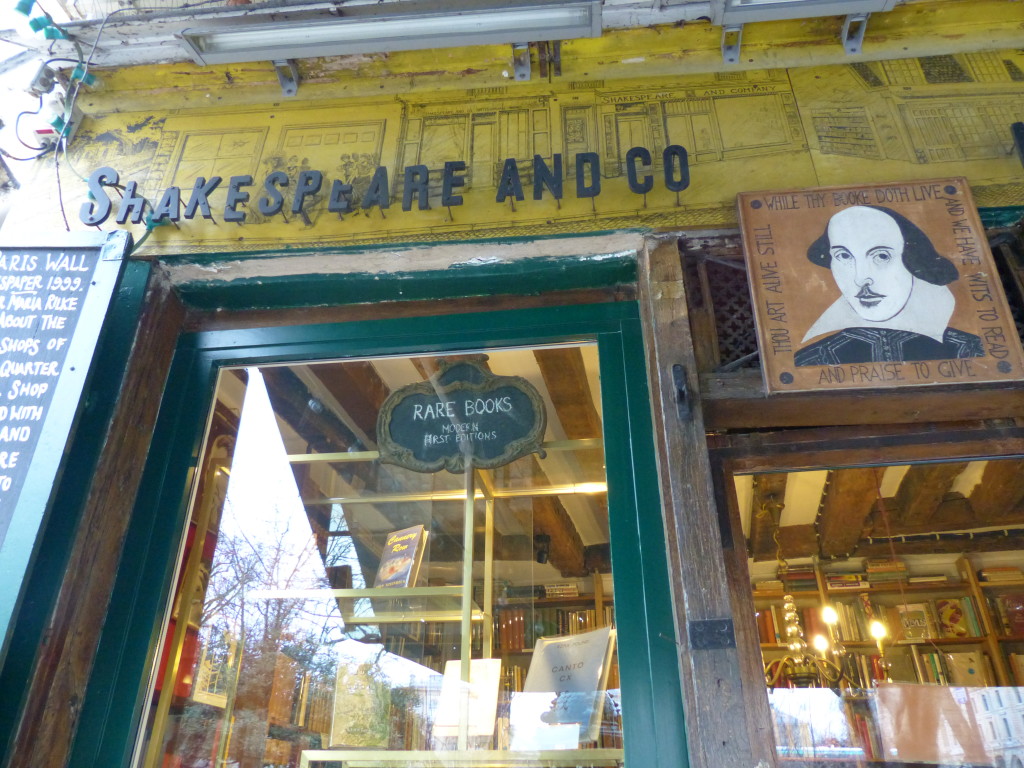
Knowing the bookstore’s history made it all the more special. We wedged ourselves into the various nooks to browse the books, chuckled at the whimsical signs, and fantasized about bumping into Hemingway or even Frank Sinatra. Sure, there were too many tourists so we felt rushed. We couldn’t plop down on a sofa to chat about the brilliant writers who may have sat on that very same sofa. Tony bought a beautiful hardback copy of Les Misérables, which the cashier stamped with the Shakespeare and Company logo. We snapped a few photos from the street (no pictures allowed inside, dang it). Pretty special.
Another metro ride took us to the Arc de Triomphe, just in time for the rekindling of the Memorial Flame, a daily ritual since 1923 that pays tribute to the unknown soldiers who died in World War I and II. Napolean began construction of this “triumphal arch” at the western end of the Champs-Élysées starting on his birthday in 1806. The arch honors those who died in battle during the Napoleonic wars. A break in the rain gave me my first chance of the day to get a bird’s eye view of Paris. Paul, Tony and I climbed the 284 stairs to a magnificent surprise. The clouds parted, and sunshine filtered through to illuminate the city. Spectacular!
We spent most of the next day in Montmartre. After a leisurely breakfast, we walked to Espace Dalí, a gallery Sepi had visited during a tour with her art students earlier this year. The audio tour offered fascinating insights about Salvador Dali’s life and art. I knew about his surrealist paintings, particularly the molten watches in his painting, The Persistence of Memory. However, I had no idea he was such a tinkerer who tried his hand at all forms of creative expression, nor did I know he was named after his dead brother and desperately fought for his own identity.
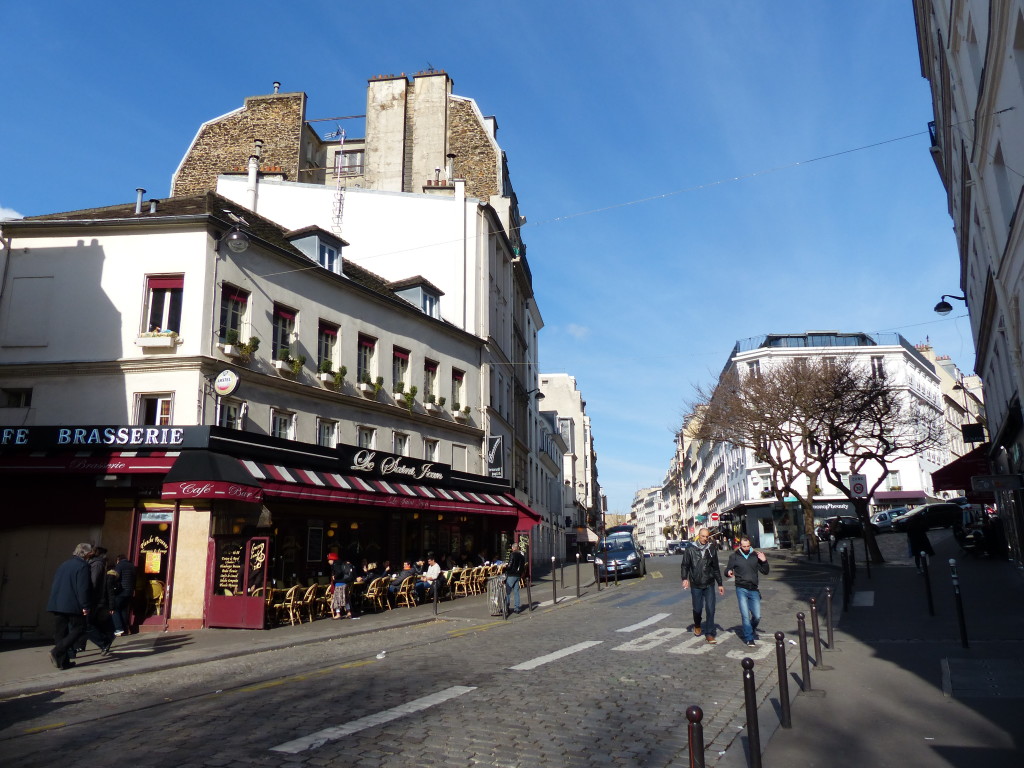
Tony loved this sculpture of Alice in Wonderland.
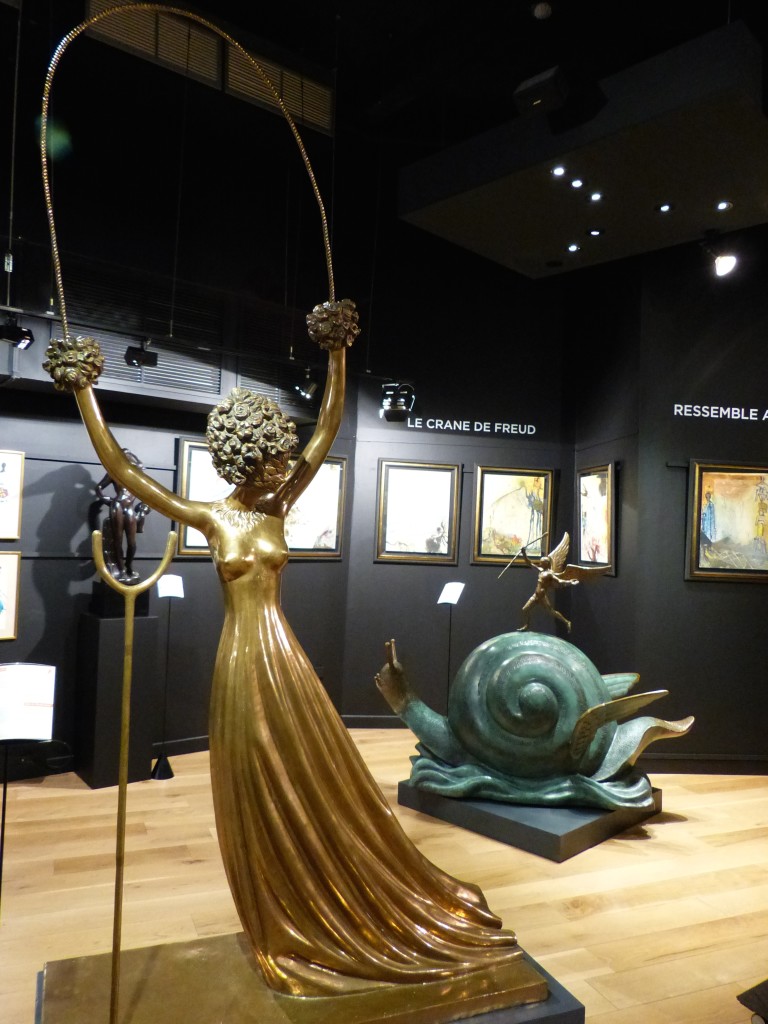
The sign read, “For Dali, Alice symbolized eternal childhood with the naivety and irrefutable logic of children that struggle against the confusion in the world.” Tony said it reminded him of all the painters and romantic poets who tried so hard to retain the sense of wonder they had as children. “When I teach, that’s what I want my kids to do: Look at the world with wonder,” he said. (He also made a snarky comment about how much he loves art depicting children at play and how much he doesn’t love real children at play.)
For me, the most steal-worthy artwork in the gallery was a no-brainer. I was completely smitten by Ménagère, a set of silver-gilt cutlery. The names are as dreamy as the pieces themselves:
* Fourchette 4 dents à manche poisson (Four tooth fork with a fish handle)
* Fourchette-éléphant 3 dents (Elephant fork with three teeth)
* Couteau escargot aux larmes (Snail knife with tears)
* Cocteau feuille (leaf knife)
* Petite cuillère-artichaut (small artichoke spoon)
* Cuillère-artichaut (artichoke spoon)
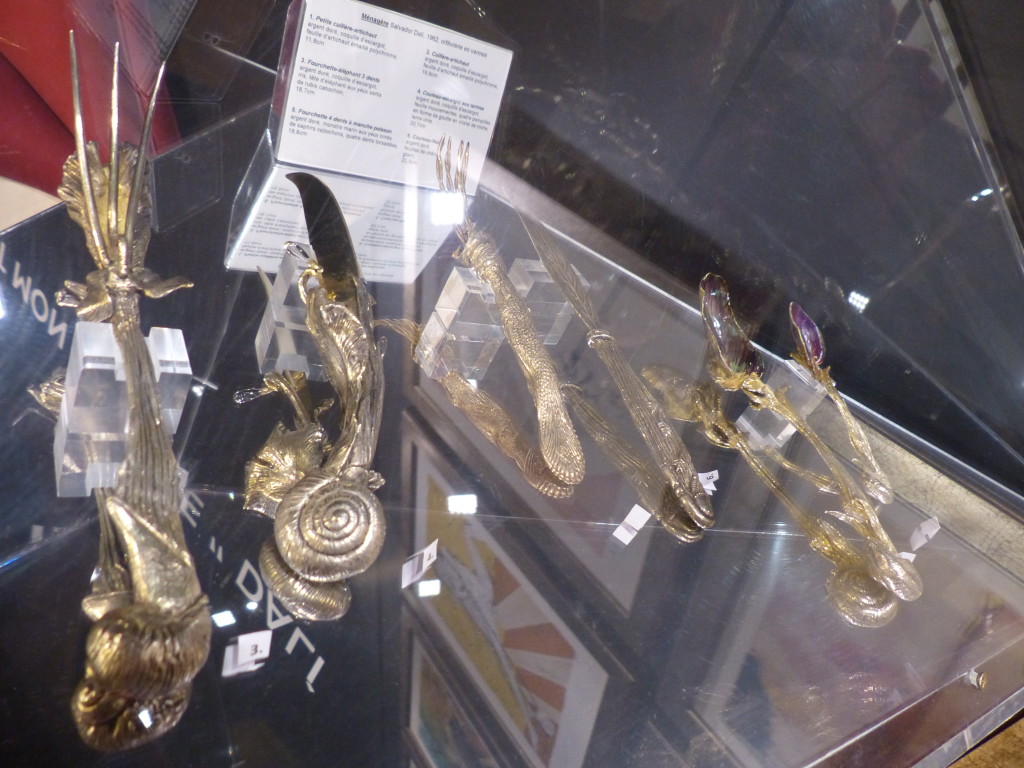
Here’s a clearer photo of a similar set from the website, The Cutlery Review.
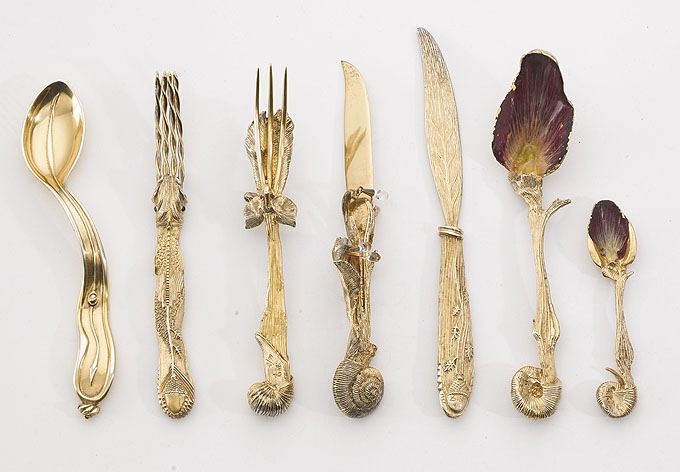
I’ve always been a fan of functional art. According to Sotheby’s, this set last sold for $28,125.
Sepi and I each took a turn in the photo booth that inserted your face into a Dali masterpiece. So classy.
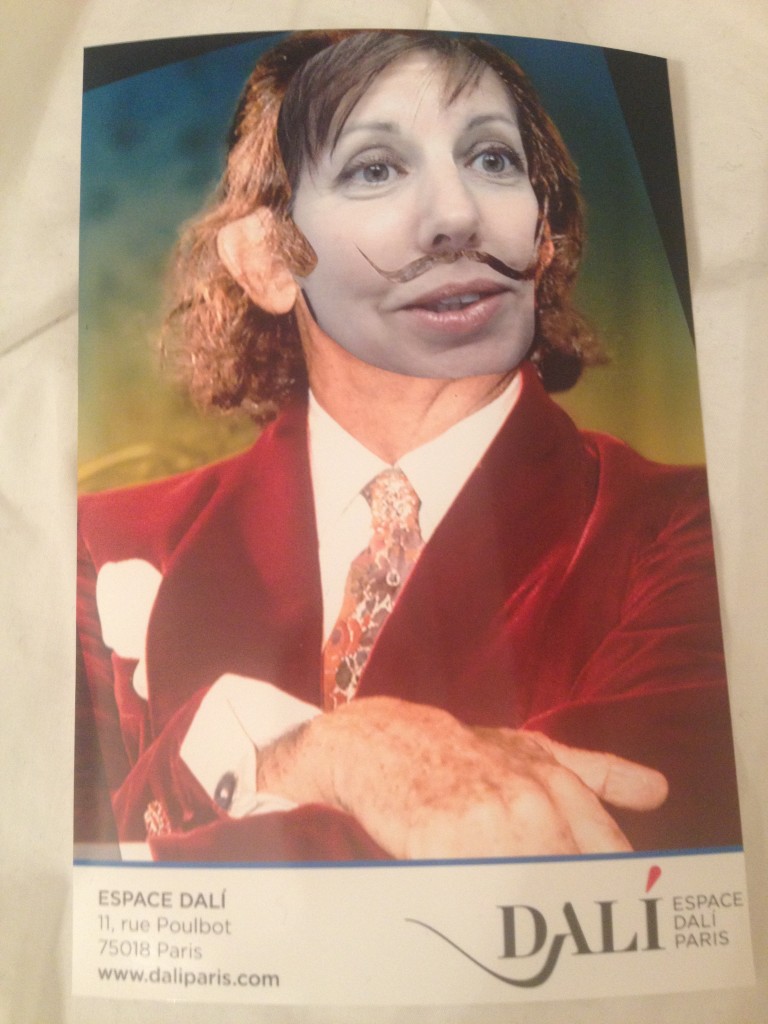
Montmartre is bursting with art. Former residents include Dali, Picasso and Van Gogh. Now artists display their paintings and offer to crank out a quick portrait just around the corner from the stunning Basilica of the Sacré Cœur. Frankly, this historic district deserved more of our attention, but instead we spotted a crêperie, and who can visit Paris without eating crêpes? So in the crêpes vs. culture competition, crêpes won. And they were delicious.
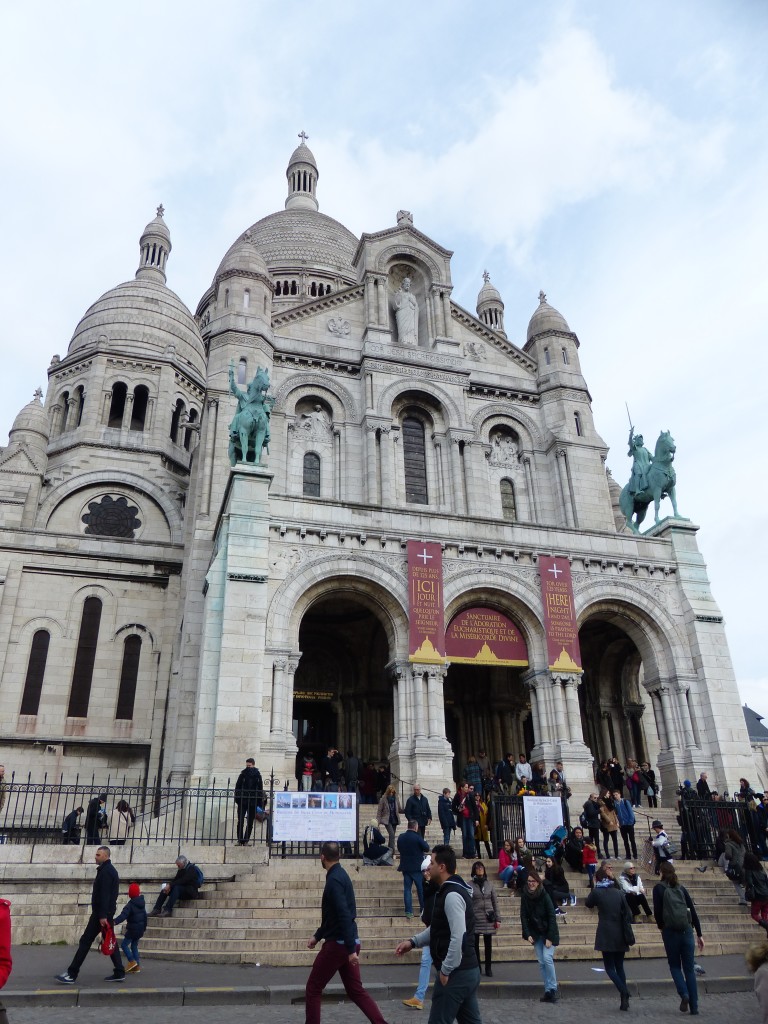
Our last day in Paris was bittersweet. We returned yet again to Au Rocher de Cancale for breakfast of croissants, coffee and eggs and then poked around the local shops for special treats to take back to India. Of course, my first priority was cheese, followed closely by wine and chocolate.
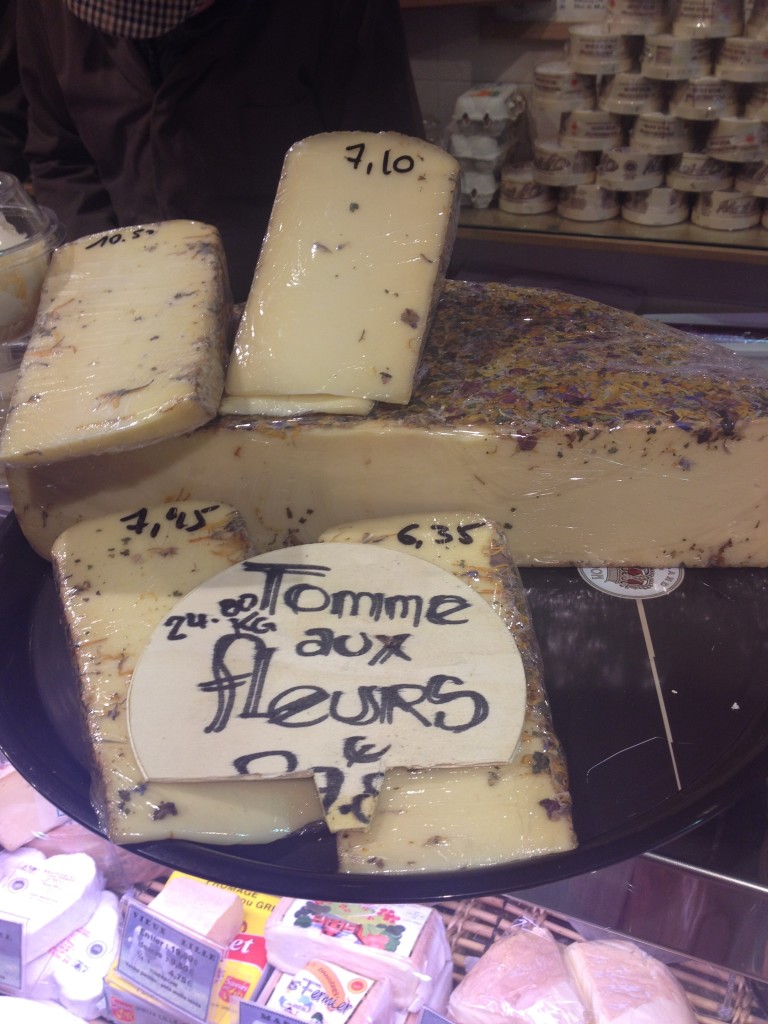
I had every intention of saving our delicious French cheese for a dinner party, but let’s face it, Tony and I are not very good at sharing.
Best. Grilled cheese sandwich. Ever.

Thanks to Sepi and Paul for sharing Paris with us!

